




Two Dodge muscle cars, the Dodge Charger SRT Hellcat and Dodge Charger HEMI, once again top the Highway Loss Data Institute’s list of the most-stolen vehicles for model years 2020-22. Meanwhile, a viral trend targeting Hyundai-Kia vehicles propelled four Kia models into the top 20.
has increased at a stunning rate. For 2020-22 Charger SRT Hellcat models, there were 25 whole-vehicle theft claims per 1,000 insured vehicle years, up from about 18 for 2019-21 models. For comparison, the most-stolen 2017-19 model, the Infiniti Q60, had only two thefts per 1,000 insured vehicle years.
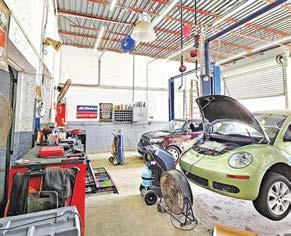 By CJ Haddad Cape Coral Breeze
By CJ Haddad Cape Coral Breeze
To be a staple business in a community, there is some criteria to be met: longevity, being prominent in what you do and customer service. Ken’s Auto Repair in Cape Coral, FL, exceeds all of those requirements, which is why the business is celebrating 50 years of serving the community.
Opened in 1973 by Ken Schuman, the shop on Del Prado Boulevard has seen it all over the past five decades, and has grown and developed with the times. The business is multitime “Best Of” winner, and has served generations of Cape Coral residents.
“I’m trying to figure out where the 50 years have gone,” Schuman, 79, joked. “When we first opened, Del Prado was one lane north, one lane south, and every once in a while, you’d see a car go by.” Ken’s started out as an auto-electric shop,
Theft claims for the Charger SRT Hellcat were more than 60 times more frequent than the average for all 2020-22 models, relative to their numbers on the road, while theft claims for the Charger HEMI were more than 20 times higher than average, HLDI’s latest whole-vehicle theft report shows.
Charger and Challenger models with large, powerful engines have featured among the top five moststolen vehicles since model year 2011, but the frequency of claims

“If you own a Hellcat, you better check your driveway,” said HLDI Senior Vice President Matt Moore “These numbers are unbelievable.”
Other frequently stolen 202022 models included luxury vehicles made by BMW, Infiniti and Land Rover, and three large pickups with powerful engines.
Relatively inexpensive models from Honda, Kia and Nissan round out the list. Thefts of Hyundai and Kia vehicles soared in recent years
l CONTINUED ON PAGE 35
A criminal indictment unsealed in federal court Aug. 23 charged five people with stealing dozens of highend vehicles worth millions of dollars from dealerships located across the U.S. The indictment charged Dewanne Lamar White, 43, of Sumter, SC; Garyka Vaughn Bost, 24, of Denver, NC; Kevin Ja’Coryen James Fields, 27, of Charlotte, NC; Hosea Fernandez Hampton Jr., 25, of Charlotte; and Reginald Eugene Hill, 23, of Charlotte; with conspiracy
to transport, possess and sell stolen vehicles in interstate commerce, and interstate transportation of a stolen motor vehicle. White, Fields and Hampton are also charged with possession of a stolen motor vehicle. According to allegations in the indictment, from 2021 to 2023, the defendants engaged in a conspiracy to steal luxury vehicles worth millions of dollars from dealerships in North Carolina, South Carolina, Georgia, Florida, Tennessee, Kentucky,
Columnist Mike Anderson: Does Your Shop Lump In Unrelated Costs with ‘Paint Materials’? 10
Columnist Abby Andrews: NHTSA, Massachusetts Find Common Ground on State’s Right to Repair Law 22
Columnist Stacey Phillips: New 3M™ Skills Development Center Will Provide Comprehensive Collision Repair Training
Columnist John Yoswick: Air Conditioning Evacuation and Recharge
Questioned
The SATAjet X 5500 universe is two things: a SATA premium paint spray gun, and your key to the SATA universe – a whole world full of exclusive content, benefits and promotions. Within the SATA universe, you can participate in special raffles. You'll be among the first to know when new SATA products appear on the horizon. Immediately following your registration you will be granted access to exclusive content.
Don't hesitate to get your SATAjet X 5500 universe.
Scan the QR code on your SATA universe gun. Register. And become part of something big.


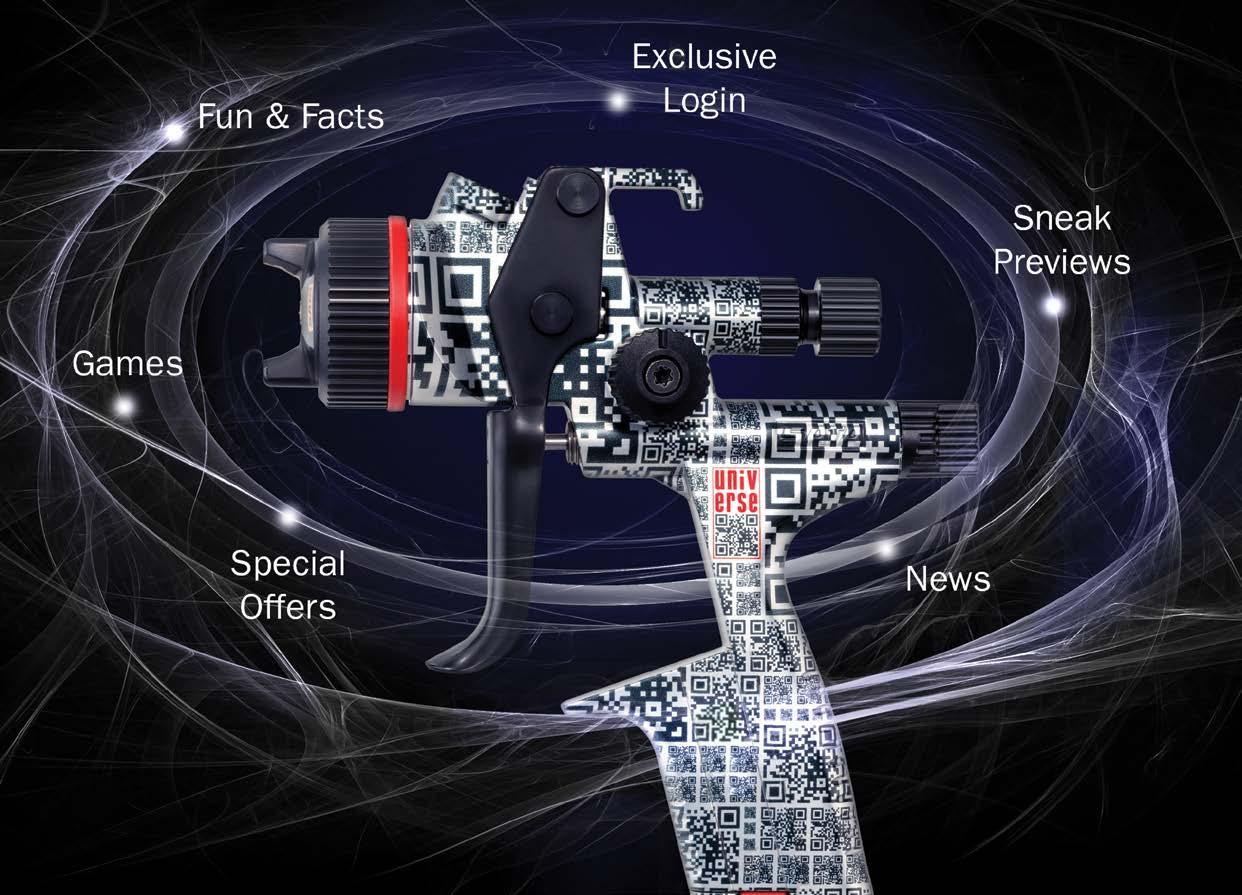
Mike Anderson Does Your Shop Lump In Unrelated Costs with ‘Paint Materials’? 10
Abby Andrews
NHTSA, Massachusetts Find Common Ground on State’s Right to Repair Law 22 Toby Chess
With seven states taking steps to require all new passenger vehicles sold to be zero emissions by 2035, experts are looking closely at the cost and environmental impact of these cars, including their production, operation and disposal. The states include California, Massachusetts, Maryland, New Jersey, New York, Oregon and Washington.
Dr. Robert Freerks, a consultant in fuels and lubricants at RLF Enterprises, shared information during a webinar hosted by the Specialty Equipment Market Association (SEMA) about whether the current infrastructure can support the widespread adoption of electric vehicles (EVs) to meet the goal of net zero emissions by 2050.
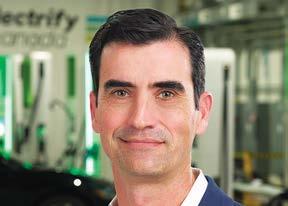

“These systems store power when electricity costs are low and supplement power during high points of consumption, helping to stabilize costs and help maximize renewable energy use,” explained Barrosa.
“To make a ton battery, which goes into a vehicle like a Tesla, you need to move between 700,000 and 1.3 million tons of earth,” he explained. “That is an incredible impact on the environment to move that much earth to get the raw materials to make a single battery.”
When evaluating the environmental impact of an EV, Freerks recommended taking a life cycle assessment, which includes looking at all energy sources and greenhouse gas emissions associated with the total lifecycle of a product.
In California, for example, Freerks said, EVs have about a 40% reduction in greenhouse gas emissions compared to an ICE vehicle. However, if that same
battery recycling and disposal.
“The number of spent batteries that are going to be generated by these EVs is skyrocketing now and it’s going to get worse in 2040 if mandates for EVs become more prevalent,” said Freerks.
Infrastructure changes will need to be made to accommodate EV growth. This includes the availability of convenient charging stations. Electrify America is taking steps to meet this challenge by investing more than $2 billion in EV charging infrastructure and education.
Barossa said Electrify America and Electrify Canada expect to double the number of chargers on the combined networks by 2026. He estimates
“Everyone thinks of them as zeroemissions vehicles but… they have emissions from all of the energy that went into producing them, as well as the energy required to make the electricity that drives them,” said Freerks, who has a Ph.D. in synthetic organic chemistry.
A main challenge, according to Freerks, is the electric grid is not set up to deliver the huge amounts of power needed to keep an EV fleet moving.
“It’s going to be an incredibly expensive increase in our electrical demand and supply to make an EV market work,” he said. “We’re not going to get there. There’s no way we are going to have zero emissions by 2050 in any realistic sense.”
However, Electrify America points to studies showing grid generation capacity is more than capable of meeting charging needs even with high EV market growth.
“There are innovative ways to support the electricity needs of the fast-growing EV industry—particularly through battery energy storage,” said Robert Barossa, president and CEO of Electrify America.
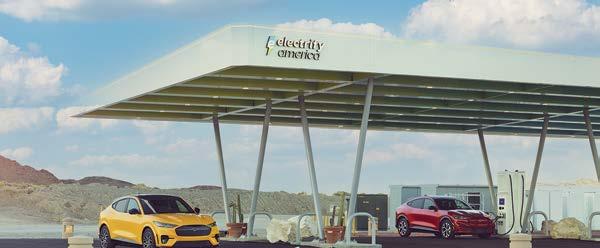
As of 2022, Electrify America installed on-site, behind-the-meter battery energy storage systems (BESS) at more than 160 DC-fast charging stations around the country, including over 90 installations in California.
Compared to an internal combustion engine (ICE) vehicle, Freerks said the raw materials needed to produce an EV are massive. While conventional cars use aluminum and iron as the primary source of their metals, EVs and their batteries rely on huge amounts of precious metals, such as copper and lithium.
“Copper is becoming in short supply and an EV has four times as much copper in it than an ICE vehicle,” he noted. “We are going to be short of a lot of raw materials that are going to make these EVs producible.”
Although there is a relatively low volume of lithium in an EV, Freerks said the price has quadrupled over the last several months. The annual average U.S. lithium carbonate price in 2021 was more than double the previous year, according to research from a U.S. Geological Survey, Mineral Commodity Summaries, in January 2022.
“Metal costs are going up quickly and are going to increase the cost of batteries, and therefore, the vehicles that use them,” he said.
This is partly due to the reliance on raw materials from other countries.
“We’re going to end up relying on other countries… for a lot of the raw materials that make our transportation system work,” observed Freerks.
Along with the seven states, Great Britain aims to go all-electric by 2035.
“If they did, they would need 7.2 million battery EVs, or about 1% of the total vehicle fleet,” said Freerks. “I can’t see that happening. It would take almost all the raw materials in the world today to make one country all electric.”
In addition to raw material shortages and rising costs, Freerks said EV lithium-ion batteries have a massive environmental impact.
car is operating in a state like Colorado, where there is a lot of coal used to make electricity, greenhouse gases are higher than a gasoline vehicle.
“There are always greenhouse gas emissions for any energy source that is produced,” explained Freerks.
Even a wind farm or solar field, for example, emits greenhouse gas emissions.
“There are ways that we can get that down to zero or even negative, but it takes a lot of effort and essentially a lot of costs to get there,” he added.
Although reports show battery costs are declining and expected to dip below $100 per cell, and advances in battery types and chemistries occur almost daily, Freerks contends the opposite.
He forecasts battery costs to continue to rise and be a significant cost of EVs moving forward due to the major shortage and cost for materials.
At the same time, battery risks remain high. Vehicle owners and manufacturers will have to contend with EV batteries catching on fire if they aren’t handled properly. According to Battery University, they must be put out with a foam extinguisher, CO2, ABC dry chemical, powder graphite, copper powder or sodium carbonate. If the fire can’t be extinguished, they need to burn in a controlled way.
There are also questions regarding
approximately 90% of Californians live within 15 miles of an Electrify America fast charger, with 96% located within 25 miles.
“When evaluating alternative energy sources and uses, one has to consider all aspects of the problem, not just the localized issues such as direct emissions from a vehicle,” noted Freerks. “EVs may not directly emit greenhouse gas emissions as they are battery-powered, but all the other aspects of battery electric vehicles have associated emissions that are a part of the global environment even if not directly part of the local environment.”
Although there are challenges transitioning to EVs, many organizations are proponents of moving forward with the widespread adoption to protect air quality and deal with the impacts of climate change.
“Transportation is a major driver of harmful emissions entering the air,” said Barossa. He estimates that before the pandemic, up to 55% of total nitrogen oxide emissions were caused by the transportation sector.
“Research shows that an EV is typically responsible for lower levels of greenhouse gases (GHGs) than the average new gasoline car,” he said. “Through more widespread EV adoption, a more sustainable world with cleaner air is possible.”
Read the full article on Autobodynews.com.
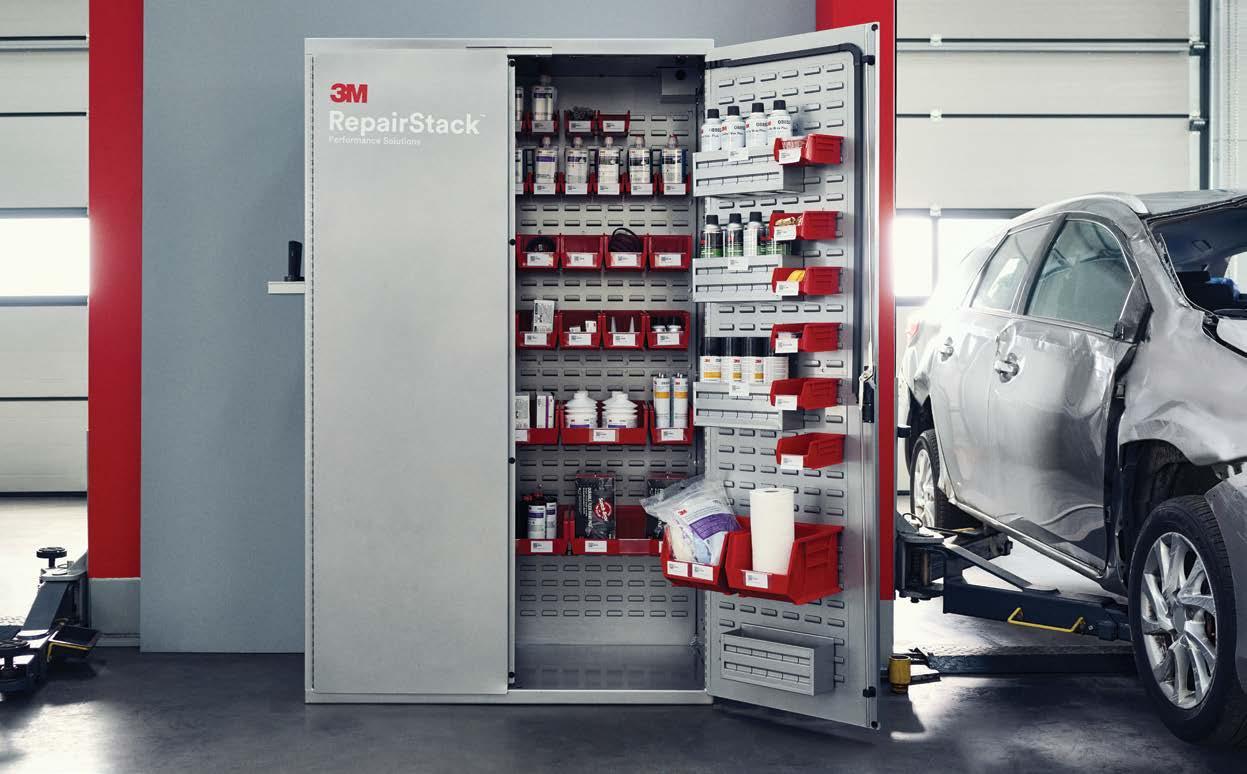





On Aug. 26, Nilsson Garcia, a deserving Daytona, FL-area veteran, experienced a lifechanging event—the presentation of a vehicle to provide him independence and the ability to get work—thanks to the National Auto Body Council Recycled Rides® program along with car donor GEICO and collision repair partner Daytona Toyota–Certified Collision Center.
NASCAR Racing Experience helped wave the green flag for the event, which took place before the NASCAR Cup race at Daytona International Speedway that evening. GEICO is a NASCAR Premier Partner, and Toyota is an official partner of Daytona International Speedway. NASCAR Racing Experience donated passes for driving school at Daytona International Speedway for Garcia, his mentor from charity partner Soldiers’ Angels, and for the team from GEICO and Daytona Toyota.
NABC, GEICO and Daytona Toyota–Certified Collision Center presented Garcia with a 2015 Ford Escape. Garcia, who served in the
U.S. Army from 1991–1995, has been without a vehicle since he had to give it up after losing his job at the beginning of the pandemic. He came to Soldiers’ Angels last year, wanting to serve as a volunteer. He was recruited to serve as an intern for Soldiers’ Angels and has worked extremely hard to meet the internship requirements. He had to either borrow a vehicle or use public transportation to get to work.
“This vehicle is such a blessing to me, I’m really just in shock,” said Garcia. “This means the world to me. I just want to be an example for other veterans who are facing challenges that there are people who care and are there to help. Now, I want to pay it forward for someone else.”
For Daytona Toyota–Certified Collision Center, this is its fifth NABC Recycled Rides vehicle.
“We want to be good community partners and give back to those in need,” said Todd Sindel, collision center manager, Daytona Toyota. “To help a veteran like Nilsson get back on the road with reliable
Hyundai and Kia’s car theft legal battles are set to continue after a federal court judge declined a proposed settlement agreement worth $200 million.
In May, Hyundai Motor America and Kia America tried to settle rather than go to court in a high-profile class-action lawsuit. As part of the $200 million settlement, Kia and Hyundai agreed to compensate around 9 million owners who suffered losses due to car damage and increased insurance premiums. The South Korean manufacturers also agreed to reimburse customers who purchased antitheft devices. A new software update to stop future thefts was also part of the settlement agreement.
According to the Associated Press, the above was not good enough. U.S. District Judge James Selna said the settlement fails to provide “fair and adequate” relief.
Selna remained concerned about whether the software update would work and the calculation of payouts to customers. Selna was likely spurred on by a letter from six attorneys general, asking Selna to force the manufacturers to install anti-theft technology and implement a buyback program. These measures would replace the software update and cash payments Hyundai and Kia suggested.
Hyundai and Kia have been swatting flies since those infamous TikTok videos emerged. Hyundai developed an anti-theft software update for the 8.3 million vehicles affected. Still, this move wasn’t good enough for State Farm, which announced it would no longer insure certain Hyundai and Kia models, including popular cars like the Hyundai Tucson and Kia Sorento.
Hyundai eventually found an alternative insurance solution for its customers, which likely came with a hefty premium over what they used to pay.
transportation and give back to other veterans is our goal. Thank you to our team here at Daytona Toyota for all their hard work refurbishing this vehicle for him. It’s an honor for us all to participate.”
NABC Recycled Rides is a unique program in which businesses representing all facets of the collision repair industry team up to repair and donate vehicles to individuals and families in need of reliable transportation. Since the inception of the NABC Recycled Rides program in 2007, members of the NABC have donated more than 3,200 vehicles valued at some $46 million.
Additional partners in the NABC Recycled Rides presentation include 1-800 Charity Cars and Enterprise.
Nilsson was also honored as the City Furniture Everyday Hero and the vehicle was “unveiled” on the big screen at Exploria Stadium that night during pregame before the Orlando City vs. St. Louis Soccer Game.
Source: NABC
The ASE Education Foundation recently conducted a workshop to review the tasks and tools used by ASE-accredited collision repair and refinish programs in high schools and colleges nationwide.
One of the major outcomes was the creation of a new area of accreditation entitled “Collision Repair and Refinish Fundamentals.” This new area includes 121 distinct skills/ tasks and requires a minimum of 300 hours of combined classroom/lab instruction. It draws from the existing areas of accreditation but focuses on five core skill areas highly valued by employers: damaged vehicle disassembly, reassembly, small dent repair, plastic repair and prep for refinish.
The updated collision repair and refinish standards include new hybrid and EV safety tasks required for all students in ASEaccredited collision repair and refinish programs.
Source: ASE Education Foundation




Since 2012, I have been walking the floor of SEMA along with my partner in crime, Kye Yeung, looking for new tools and products. We would purchase the items and test them before considering them for “Kool Tools of SEMA.” You can view past presentations at www.SCRS. com.
Due to health issues and the pandemic, I relinquished everything to the SCRS Education Committee. I will still contribute, but I wanted to do something different. So here is my new project: “Must See Kool Tools of SEMA 2023.” Some are new, some are old and some are additions.







that combines the catalyst with the product in a spray can. The catalyst is activated by moisture in the air. Thusly, the spray can have a threeyear shelf life. There are five colors of DTM primers—two green, white, gray and black. It is epoxy 2K paint, the closet product to factory applied E-coat (electrodeposition primer).


The Leister heat gun, set up for plastic welding, does not use ntrogen gas and shop air. The company is more than 70 years old and a leader of plastic repair in Europe. Using the heat gun, I was able to repair a broken side mounting tab just as easy as using a nitrogen welder. It is a very affordable piece of equipment that most shops can afford.

The new HINGE tabs bring versatility and strength previously not possible for using GPR to correct pillars, dog legs, door edges, seams and body lines. Flexibility of the tab wings allow for almost infinite possibilities and promote parallel alignment for strong glue pulls on unpredictable damage.
The shape of the jaws allows the pliers to grips rounded-off fasteners, nuts and smooth pipes without slipping. The jaw design fits hex, round and square shapes. It works as a “backer wrench” for damaged fasteners or when a second wrench is handy.
The Clecos pictured are used when holes are needed for fasteners. Use the ¼ Clecos for a 6.5-millimeter hole as recommended by Ford.
The impact wrench is small and lightweight—only 3 pounds—but it has 500 foot-pounds of torque, great for getting into tight spaces.
The lateral tension tool beam design allows lateral tension to be placed near the dent. By placing tension outward of the dent, the tension reduces the pressure created by the dent to allow for easier movement of the metal. In other words, the LTT beams will create the ultimate setup for metal flow on both sides of damage, allowing technicians to have the damage area completely free and uninhibited to work.
The drill set TS20 (1/16th to ½ drills). You will notice the end of the bit is similar to a step drill. When drilling in to steel, it is recommended to start with a small bit and keep increasing the size bit until you use the desired diameter. Well, with these bits, it is not necessary to use multiple drill bits, just one. Granted they don’t come with a lifetime warranty offered by the tool trucks, but these sell for a third of the price.
Wisespray developed DTM epoxy primers with a new technology
These locking pliers are very different than most other locking plier brands. These pliers use a pull-style trigger for a quick and easy one-handed release that won’t pinch your fingers like most other brands. I discovered this company and made them a Kool Tools of SEMA. They have helped me out with tools at a discounted price for all the apprentices I support. Check them out when you are at SEMA.
The 4Plastic repair system, distributed through Kent Automotive, is one of the best new products for duplicating factor textured finish on plastic parts. A water-based product using a supplied adhesion promoter, primer and finish is all in one system. Comes in black and a color-matching gray (tint and color matching cards).
MRO Tools’ plier-operated KSG series is ideal for bonding, gluing and sealant operations. These clamps work well with all types of material. Jaw depth is 1 inch, material thickness 0-1/2 inch. Clamping force is 12-25 pounds. You will use these clamps instead of pliers. The set of five clamps is about the same price, available on Amazon, as 7-inch locking pliers.



I purchased the Fast Puller from GUNIWHEEL to help train the entry level technicians I am working with in their teardown learning module. The students use this tool to pull out damaged sheet metal for teardown access. The tool has more than 500 pounds of pulling pressure and is extremely safe to use; I added a safety cable to mine. Being lightweight and portable, it can be used anywhere in a shop as long as there is a flat surface and shop-supplied air. I also use it for added training with the KECO Glue-on Tab System to pull rocker and quarter panels—the student first needs to show proficiency with the KECO Glue-on Tab System.
This tool is not at SEMA, but available from Amazon. The Houshan Edge Pliers are a great addition to a collision tool box. Lips on doors, fenders, hood and deck lids that have a raised edge or surface can be flattened with very little effort with these uniquely designed pliers. I am able to repair the lips without using a hammer and dolly. The price is under $30.
A number of these tools will also be part of SCRS’s Kool Tools of SEMA 2023. I will scour the floor of SEMA this year looking for tools and equipment that will help speed up and/or improve the quality of repairs in your shop.

OEM, INSURANCE, FLEET PARTNERSHIPS ANALYTICS & KPI DASHBOARDS
NATIONAL VENDOR DISCOUNTS AND REBATES
MARKETING SUPPORT
OPERATIONS COACHING COLLISION UNIVERSITY: ONLINE LEARNING PLATFORM
A reader recently sent me a question related to refinish materials. This is the second in a series of articles prompted by that question, all related to refinish issues—the first appeared in the September issue of Autobody News.


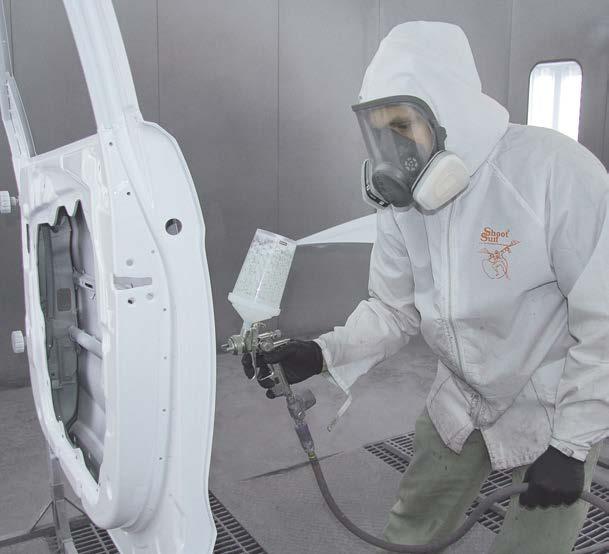
screen from our portal where we track the performance of many shops we consult with. It shows the shop spent $16,379 with their jobber in the month of July. Now some shops might just look at that as their cost of materials, and
that should be itemized and billed out on the estimate. Things like seam sealer, undercoating, cavity wax, weld-through primer, clips and fasteners. Not paint materials costs. This shop spent about $367 on safety items: paint suits, respirators, dust masks, gloves. Not paint materials costs.
as paint materials. Of course it would look like the shop wasn’t making any money on paint materials if all those other costs were included.
One of the most common questions I get from shops is something like, “Mike, can you help me, I’m not making money on my paint materials.” As I mentioned in my previous column, I first want to see what their average paint labor hours per repair order are, and then what their paint materials sales are as a percentage of their total revenue.
But I also want to look at their paint material costs as a percentage of sales. In other words, how much do they pay for materials compared to what they collect? I often see their costs are very high. Now there’s several reasons why this could be. It could be their painters are having to redo a lot of jobs. There could be other waste. There even could be theft.
But often what I see is a shop classifying costs as paint materials that really aren’t paint materials costs.
To illustrate this, I can pull up a
measure their paint materials sales against that number.
But that’s not accurate because most shops buy far more from their jobber or distributor than just paint materials. In our example, just over half—$8,891—of the $16,379 paid to the jobber was for liquids: primers, sealers, colors, clear. All paint materials.
The shop also bought allied products: sandpaper, tape, masking materials, mixing materials, etc. For this shop, those purchases were more than $2,800 of the $16,379 total. I consider things like gravel or chip guard, tack rags and things of the nature part of a miscellaneous category under paint materials. And all of that is legitimately paint materials costs.
But look at what else this particular shop spent with its jobber in July. About $1,120 of the $16,379 was for stock parts, things
The shop bought body supplies, a $1,476 piece of equipment, $507 worth of shop supplies, and small tools costing $720. Not paint materials.
If this shop was posting all those costs against their paint materials sales, that’s just not an accurate measure of what they are making on paint materials. That jobber bill includes about $5,000 spent on items that should not be classified
Some jobbers or distributors will send their customers multiple invoices or statements that help break the total costs down to simplify bookkeeping. But that’s usually four or five sub-invoices at the most, and I think there’s actually a dozen or more different categories. Some shops buy software from their jobber, for example. Others buy aftermarket parts. You can’t just take all these things you buy from your jobber and post them to paint materials because it’s not all paint materials.
More on this topic in my next column.
“But often what I see is a shop classifying costs as paint materials that really aren’t paint materials costs.”
MIKE ANDERSON
Oct 31 - Nov 3


Alabama, Mississippi, Louisiana, Indiana, Ohio, Pennsylvania, New Jersey, New York and Arizona. The coconspirators allegedly transported the stolen vehicles back to Charlotte and sold them locally at prices well below market value.
The indictment further alleges that, to maximize profits, the coconspirators stole luxury vehicles made by Bentley, BMW, Cadillac, Land Rover, Porsche and MercedesBenz, and other expensive models from Chevrolet, Dodge, Ford and other manufacturers.
The defendants allegedly executed the thefts in a number of ways. In some instances, the coconspirators visited dealerships posing as customers interested in purchasing the vehicles. After pretending to test drive or inspect the vehicles, the co-conspirators would allegedly swap the vehicles’ key fobs with similar ones, and later use the stolen key fobs to steal the vehicles. Other times, the co-conspirators allegedly employed methods like “smash and grab” thefts, where they would break into dealerships and locate keys to the high-end models, or break open lockboxes containing keys to luxury vehicles, and then
drive the vehicles off the lot.
The indictment alleges Bost, Fields and Hill often served as drivers in the conspiracy, and White and Hampton frequently paid them and other drivers for their work in the scheme. The indictment further alleges on several occasions the defendants and their co-conspirators stole multiple vehicles simultaneously, resulting in hundreds of thousands of dollars in losses. Once the stolen vehicles were taken off the dealership lots, the defendants allegedly avoided law enforcement detection by removing the GPS navigation and tracking systems from the stolen vehicles, attaching fictitious dealer tags or stolen license plates on the vehicles, and replacing the vehicles’ authentic VINs, among other things.
The announcement of the indictment was made by Dena J. King, U.S. attorney for the Western District of North Carolina, who was joined by Ronnie Martinez, special agent in charge of Homeland Security Investigations (HSI) in North Carolina and South Carolina, Robert M. DeWitt, special agent in charge of the FBI in North Carolina, and Chief Johnny Jennings of the Charlotte Mecklenburg Police Department (CMPD).
“We will not tolerate brazen theft schemes that cost businesses and

consumers millions of dollars,” King said. “I want to thank our federal and local law enforcement partners for their incredible work with this ongoing investigation that has led to today’s charges.”
The charge of conspiracy to transport, possess and sell stolen vehicles in interstate commerce carries a maximum penalty of five years in prison and a $250,000 fine. The charge of interstate transportation of a stolen motor vehicle and possession of a stolen vehicle each carry a statutory maximum penalty of 10 years in prison and a $250,000 fine.
The charges in the indictment are allegations and the defendants are presumed innocent unless and until proven guilty beyond reasonable doubt in a court of law.
King thanked HSI, FBI and CMPD for their investigation of the case and recognized the contributions of the York County (SC) Sheriff’s Office and many other state and local law enforcement partners that contributed to the investigation.
Assistant U.S. Attorneys William Bozin and Daniel Ryan of the U.S. Attorney’s Office in Charlotte are prosecuting the case.
Source: U.S. Attorney’s Office Western District of North Carolina

Autonomy, a national EV subscription company, and EV Mobility, LLC., an EV car-sharing platform, have entered into an agreement whereby once certain conditions are met Autonomy will acquire the technology, assets and customer accounts of EV Mobility. The acquisition will accelerate flexible (hourly, daily, weekly, monthly and yearly) access to an EV to a broader market by making an EV available to anyone with a valid driver’s license, credit card and smartphone.

Autonomy has been providing a growing fleet of vehicles to EV Mobility over the last 12 months. EV Mobility operates a profitable, B-to-B car-share business that partners with high-end property owners and luxury hotels to provide flexible (hourly/ daily) access to an EV as an amenity to their customers. The hotel/ property owner covers the monthly cost of the vehicle, insurance and charging infrastructure. Hourly usage fees are all processed by the customer directly in the EV Mobility app, with a revenue split between the property owner and EV Mobility.
Source: Autonomy



 By John Yoswick Autobody News
By John Yoswick Autobody News









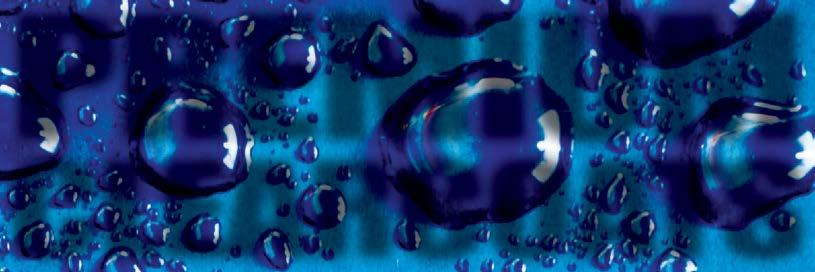
As the summer comes to an end, estimating system labor times associated with evacuation and recharging of vehicle air conditioning systems with R1234yf refrigerant remain a heated issue for some in the industry.


The Database Enhancement Gateway (DEG) has received at least 40 inquiries in recent years related to that issue. Although the estimating system providers have long provided a way for anyone in the industry to submit inquiries related to missing or potentially inaccurate information in the systems, the DEG was created by a number of shop trade associations as an easier and centralized way to submit—and monitor what happens to—such inquiries.
Danny Gredinberg, DEG administrator, said the three major estimating system providers have generally said after review of the air conditioning related inquiries, no change was needed. But he pointed out the costs of the R1234yf equipment—and of the refrigerant itself—are higher than those related to earlier systems using other types of refrigerant, and the time to perform
the process has changed.
“But one thing that hasn’t changed is the labor time [in the estimating systems],” Gredinberg said at a recent Society of Collision Repair Specialists (SCRS) meeting. “That has stayed the same from the beginning of time.”
Shop owner Barry Dorn of Dorn’s Body & Paint in Mechanicsville, VA, said he and one of his technicians compiled lists of the steps needed to evacuate and recharge a system with R134a refrigerant, and significantly longer lists of the steps required to evacuate and recharge a system with R1234yf refrigerant.
“We are seeing the times spent on these operations more than double the generic times the [estimating systems] are claiming that it should take,” Dorn said.
The DEG overall fielded 1,020 inquiries related to the three major estimating systems in the first half of this year, putting it on pace to match last year’s total of more than 2,000. One DEG inquiry submitted in mid-April, for example, questioned the roof refinish time for the 2020 Ram 3500 in the Mitchell estimating system given the size and height of the vehicle, “requiring additional effort to go up and down to prep and refinish.” After review, Mitchell increased the refinish labor time from 2.8 hours to 4.3 hours.
Gredinberg said 55% of this year’s inquiries resulted in some change to an estimating system database, including more than 850 paint or body labor hours being added to operations, and more than $9,000 in missing parts added to the systems.
“You can see this is a useful resource to the industry,” Gredinberg said. “All we want is fair and accurate information in the systems that’s visible to both sides.”






Also at the SCRS meeting, the association pushed back against several organizations that have

been critical of an agreement SCRS—along with the Automotive Service Association (ASA)—recently announced with a coalition of automakers. The agreement reaffirms that “independent repair facilities shall have access to the same diagnostic and repair information that auto manufacturers make available to [their] dealer networks.”
Several organizations, which also represent industry segments beyond mechanical and collision repair shops, say that agreement lacks enforcement and does not diminish the need for federal right-to-repair legislation.
But SCRS Executive Director Aaron Schulenburg said he doesn’t have collision repairers telling him they can’t get the OEM information they need. He said SCRS believes consumers should be able to choose an independent repair shop to work on their vehicle, and those shops should continue to have access to the OEM repair information—and that’s what the agreement is all about.
“I think any [organization] that challenges or objects to that shared position between two leading repair organizations and an automaker organization should be questioned,” he said.

“All we want is fair and accurate information in the systems that’s visible to both sides.”
DANNY GREDINBERG DEG ADMINISTRATOR
Collision repair instructors from across the country recently had the opportunity to attend a four-day training program at the new 3M™ Skills Development Center (SDC). Located in Saint Paul, MN, the multimillion-dollar, 15,000-squarefoot training center anchors 3M’s vision to provide comprehensive training to the collision repair industry.
“The automotive aftermarket is a very important segment of our business and people look to us as a leader in this industry,” said Dave Gunderson, president of 3M’s Automotive Aftermarket Division. “Being a leader doesn’t mean just selling the best products, but also responding to the needs of the industry and helping it grow.”
With a worldwide shortage of qualified technicians and increasingly complex vehicles being manufactured, 3M opened the SDC to bring awareness to the employment opportunities available in the industry, help instructors and technicians keep up with the latest technologies and ensure they are trained to repair vehicles properly.
The facility, located near the company’s headquarters, includes classrooms, a shop area with a 35-foot paint booth, workshop stations with electrical and air service, 12 welding stations and the latest equipment and tooling. Camera stations are set up through the classroom and shop areas to broadcast training sessions.
Each summer for the past 13 years, 3M has invited collision repair teachers to apply to its Collision Repair Academy Collision Repair Instructor Training program held at the former training center on the 3M Campus. Since then, nearly 250 instructors, representing 185 schools across North America, have attended. The classes, offered at no charge, are designed to help upskill instructors to be in the best position to teach their students.
To apply for the program, prospective attendees share information about themselves, their collision repair programs and why they’d like to attend. The 3M team then rates the applications based on specific attributes.
“We really want to invite wellrespected leaders who are impassioned about what they’re doing in their organizations and want to support their students,” explained
Gunderson. “We give priority to new teachers and instructors who have never attended before.”
This year, 32 instructors were asked to attend one of two four-day programs in late July and early August at the SDC.
3M instructors—Shawn Collins, Ryan Marrinan and Jason Garfoot— “trained the trainers,” using hands-on methods to reinforce key concepts supported by classroom theory and discussion. The program covered 3M-developed best practices in foundational body repair processes supported by OEM repair documentation in the areas
on OEM guidelines.
“We want them to know what they are doing really matters,” said Gunderson. “It’s not just that the car appearance looks good, but it’s repaired properly and safe to drive.”
“By introducing the Science of Why and explaining the reasoning, it allows them to understand and retain information so their behaviors change,” said Scharton.
Not only did they receive indepth training, attendees had an opportunity to bond with each other, Scharton said.
“It’s fun to see those connections and how they supported each other,” he said.
Part of the week also included a custom painting and masking competition using speedshapes.
As an I-CAR Sustaining Partner and Industry Training Alliance Partner, 3M works closely with the educational organization to develop and deliver courses that meet requirements based on defined knowledge and skill areas for different roles in the shop.
Adam Spah, application engineering manager at 3M. “While the pandemic slowed things down for a couple of years, our leadership team never wavered in their support of the team. They recognize the importance of continued skill development to the industry,” Spah said.
“We wanted this facility to be a destination to train technicians,” said Scharton.
The SDC will cater to a crosssection of students, including those entering the profession, as well as more experienced technicians and instructors.
A variety of classes will be offered, from fundamental skills new employees should know to more advanced training and upskilling.
By educating students and placing them in a collision repair facility, Gunderson said it’s exciting to see them realize they can build a career and make a really good income.
Students will have access to 3M instructors who are formally trained in their professions, articulate and have industry experience.
Scharton said their credibility as former collision technicians helps them connect with the students they teach.
of body repair tools and application techniques, panel removal and replacement, welding, corrosion protection techniques, aluminum substrate repair, dent repair methodology, paint preparation and masking, and paint finishing.
Jason Scharton, senior manager, Global Expertise Delivery for the 3M Automotive Aftermarket Division, said 3M instructors encouraged participants to push their skills, challenge their experience, advance their craft and learn from experts to expand their collision repair knowledge.

An important aspect of the program was teaching instructors how to approach the curriculum in their schools to engage students so they understand the material based on 3M’s unique training approach, “The Science of Why.”
Attendees were taught the “why” behind modern repair methods to absorb and retain practices that may vary from how things have been done over the last 30 years.
Historically, information has been passed down to technicians based on how things have always been done. Rather than teaching students to repair vehicles a certain way because someone said to, 3M explains the reasoning behind the repair process and the relevant importance based
3M also consults with OEMs to not only make sure the most up to date repair procedures are used, but also on how the training sessions integrate with their certified network requirements.
Founded in 1902, 3M was officially known as Minnesota Mining and Manufacturing Company until 2002. The American corporation manufactures a variety of products for multiple industries, including automotive, health care and consumer products. As part of the company’s mission to apply science to improve lives, 3M recognized the need to make an impactful contribution to the collision repair industry by building a world-class training facility.
Over the past several years, Gunderson has presented at a number of conferences, discussing how to encourage more people to join the industry.
“One of the biggest challenges is they just don’t know what they don’t know,” he noted. “We made this investment in the training facility to create an awareness of the opportunities available in the industry.”
From idea to completion, the path to opening the SDC has been a fiveyear journey led by project manager
“We look for what we call the ‘approachable expert,’ someone who can stand up, represent the science of why, and relate very comfortably with the technicians while speaking their language,” he explained.
3M plans to use the SDC as a test bed and learn from the model before scaling it in other major markets.
“This facility is hopefully a showpiece to allow us to do that,” said Scharton.
In addition to 3M’s other training centers around the globe, the 3M Collision Repair Academy offers online e-learning courses and videos. Plans include expanding the platform by adding virtual events and webinars.
“Our goal is to support the industry however and wherever they need it, whether that’s taking an online course to learn the process of using adhesive on a plastic repair or attending a live class at the SDC with a 3M expert to learn how to do a repair as successfully and safely as possible following OEM repair procedures,” said Scharton.
”Simply stated, we’re here to help,” concluded Gunderson.
Later this year, 3M will hold an industry grand opening of the SDC. For more information, visit 3MCollision.com/Learn or email 3MCollisionRepairAcademy@mmm. com.
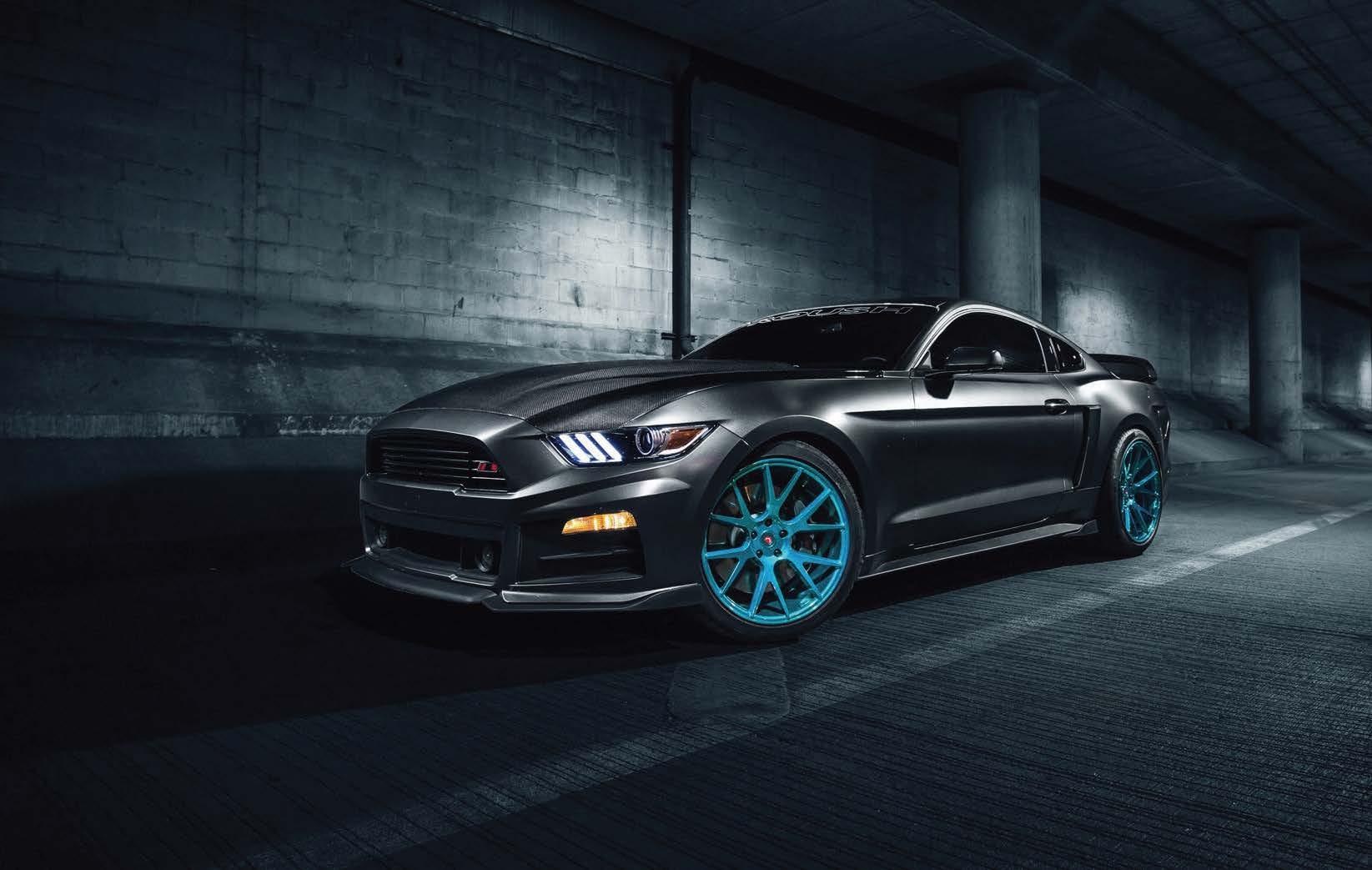
In Bloomingdale, OH, Russell Achhammer teaches auto collision technology to students at Jefferson County Vocational School; 11 are male and five are female.
“The 3M training was important and provided me with the knowledge to learn the latest technology in repairing a variety of substrates and modern repair techniques and procedures,” said Achhammer, who has been teaching at the vocational school for six years. “The training and hands-on exercises gave me a lot of great ideas to help teach students.”
Achhammer plans to break down the lessons into smaller ones to educate students on modern repair techniques.


Instructor Chad Crum is in his second year of teaching at Tennessee
He said technicians should know better than anyone the importance of properly repairing damaged vehicles because lives are at stake.
“I attended the 3M training because I believe students need to learn these important procedures as soon as possible before bad habits are developed,” noted Crum. “These procedures need to begin in our secondary and post-secondary learning institutions.”
Crum said TCAT President Kelli Chaney is fantastic about allowing him to attend training.
“At Tennessee College of Applied Technology Knoxville, we prioritize providing our instructors with relevant professional development opportunities,” said Chaney. “Through innovative training by 3M, we ensure that our college remains at the forefront of the latest technology advancements available to the industry.”
Bree Downs is in her 20th year
“With the way the collision repair industry is changing, training is very important to me so I can keep up to date with new materials and processes and offer the most knowledge I can to my students,” said Downs. “With the knowledge I gained at the 3M training, I will be able to teach my students the most current repair methods.”
Jeffrey Kastel’s education from 3M was his first opportunity to learn from master-level technicians. Currently in his third year of instructing at Amos Alonzo Stag High School in Palos Hills, IL, Kastel said 120 students will take his semester course this year.
He said the 3M instructor training provided him with ideas to better implement instructional practices.
“I was able to gain new understanding on proper procedures that meet the new industry standards,” said Kastel. “The experience I had during the four-day 3M instructor
TX. About 100 students are currently enrolled in the school’s four-year collision repair program.
Hernandez, the lead collision repair instructor, said it’s important to learn about new technologies and meeting the standard operating procedures (SOPs).
“Since we are no longer in the shop, we do not get to see or learn new vehicle technology,” said Hernandez. “3M training is by far the best training I have been to as an instructor and helps me with new and different ways to reach my students.”
In her third year of teaching at Lockhart, Rodriguez said industry training is vital for students.
“It encompasses more than just a trade,” she noted. “Industry training helps students gain practical skills and real-world experiences.”
The 3M course helped her teach students up-to-date skills, as well as how to use new tools that aid in facilitating and speeding up the

 By John Yoswick Autobody News
By John Yoswick Autobody News
The Collision Industry Conference (CIC) offers an opportunity for the industry to hear the latest collisionrelated news from the automakers, and this past summer’s meeting held in Indianapolis was no exception.
the site does not correlate with the number of Nissan vehicles being repaired.
“I don’t think if there’s 100,000 repairs, I have to have 100,000 logins,” Dent said. “But when I’m a lot less than that, that reflects on the operators [of] the majority of the body shops.”
Shops and technicians can’t continue to rely on “doing what we’ve always done,” he said.
But Dent also was asked about the challenge of even a small job requiring hours of research.
“We know that’s a problem. We see that,” he said, noting he and a colleague worked on an estimate that required more than four hours of research. But he also pointed to other sources of information that could help bridge the gap, noting that using OEConnection’s RepairLogic for that same estimate shaved hours off the research time.
“But it is highly possible to start using some of that information in the not-too-distant future for proper triaging of vehicles,” Cid said. “You may not know the parts list on it, but you’ll know how severe that impact was. You can start to get an idea of whether it’s drivable or not.”
diagnosing problems, he said, but there are too many variables related to collisions.
“You have an accident and it shows the headlight is bad. But is the headlight bad? Or did the wiring harness get damaged in the accident and there’s actually nothing wrong with the headlight?” Logan said.
Logan said shops working on Rivian vehicles—or others for which owners have a cell phone app—need good procedures for ensuring those vehicles are placed in service mode during repairs.
Dan Dent, who oversees the certified collision repair network for Nissan, said the automaker has launched a new virtual academy for training, and is enhancing its shop locator to allow Nissan and INFINITI owners to schedule appointments and request photo estimates. That system will use Carwise so appointments and estimate requests will arrive at the shop “in a format you’re used to seeing it in,” Dent said.
But the change in the program he announced that actually drew applause from meeting attendees was some new dealership training launching this fall.
Dent asked shop owners at the meeting to all raise their hand, then said they should lower their hand if they’d ever had a customer say, “I talked to the dealership service advisor, and they said I didn’t need to do that,” referring to something the body shop said needed to be done. Every raised hand in the room dropped. Dent said Nissan is working with Collision Advice on training that will help service advisors “completely understand the situation you’re in on a daily basis.”
“So when they ask about calibrations, what does that really mean, how do we answer that,” Dent said as an example. “Dealers will have about 90 days to complete that training once that class is out.”
Using the OEM Repair Information
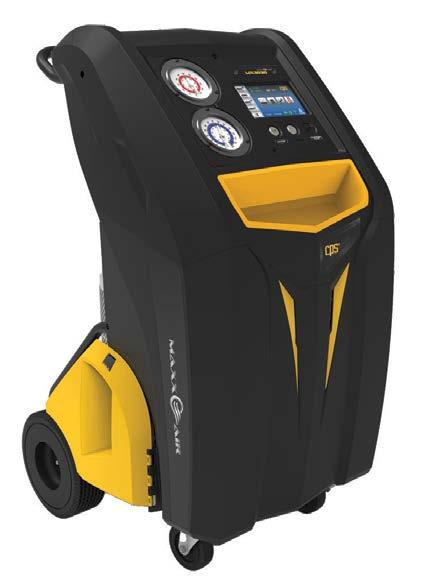
Dent described Nissan’s TechInfo website as “the baseline truth for everything when it comes to our repairs,” but noted current usage of
“Is it 100%? No, but it’s better than what you’re doing” if you’re not looking up any of the automaker’s information, Dent said. “I have endorsed RepairLogic to say at the very least why aren’t you using that?”
Kelly Logan, director of the Rivian collision repair program, concurred that an accurate parts list through vehicle telematics won’t be available soon.
“That’s the ultimate goal [but] it’s going to take a long time to get there,” he said.
Vehicles are getting better at self-
“It’s not about disconnecting the customer from their vehicle,” he said. “But in certain instances you can open doors or open the hood or honk the horn. I’ve known of probably two instances where there was a car in a paint booth and someone decided to [remotely] open a hood that was all masked off. If you’re a technician working on the front end of a car and all of a sudden the horn blares, you’re really not going to be too happy about that.”
The next CIC meeting is taking place Oct. 31 in Las Vegas during SEMA week.
Other automaker representatives offered a variety of insights during discussions at CIC. Anita Rexwinkle , who oversees the aftersales parts program for Mazda North America, said the message she’s heard during recent industry meetings is that more collisionrelated position statements are needed from Mazda.
“That’s a big issue of mine, to support you repairing a car properly, and having the directives to be able to utilize when you’re writing estimates,” she said. “I’m glad to say that’s finally starting to move.”
Ben Cid, collision manager for Mercedes-Benz USA, said the industry shouldn’t look any time soon for vehicle telematics to provide a parts list for a vehicle after an accident.
“That’s a big issue of mine, to support you repairing a car properly, and having the directives to be able to utilize when you’re writing estimates.”
ANITA REXWINKLE MAZDA NORTH AMERICA


The KECO GPR system is not an add-on to a stud welding system... it is a complete replacement for stud welding.
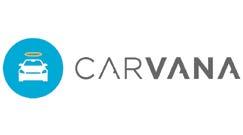
Carvana is the first used auto dealer to provide select customers in North Carolina with the speedy and convenient service of online purchasing with same day delivery.
day delivery to the greater Charlotte area feels like a full circle moment for Carvana as we raise the bar for local customers, including dozens in the area that have already gotten to enjoy the ease and convenience of same day speed.”
Carvana customers already benefit from an accessible, transparent and intuitive online car buying experience, and now area residents have the opportunity to receive their new ride as soon as the same day they order it.
“When we launched vehicle delivery in Charlotte almost 10 years ago, it was only the third market Carvana served. Nearly a decade later, as the nation’s second largest used auto dealer, we continue to strive for an even better online car buying and selling experience,” said Matt Dundas, Carvana senior director of finance. “Now, bringing same
Initially launched in Arizona earlier in August, Carvana has now brought same day delivery to Indiana and North Carolina, with plans to roll out its new offering in additional markets across its nationwide footprint in the coming months.
The capabilities making this possible include Carvana’s extensive infrastructure—including a nationwide network of inspection and reconditioning centers and a robust, efficient logistics fleet— combined with its digitally native purchasing and underwriting that has simplified and accelerated important elements of the online car buying process.


In addition to buying, selling or trading in a vehicle, Carvana’s integrated online auto retail experience facilitates financing, insurance, warranty and service.
Consumers enthusiastically endorsed its approach and made Carvana the fastest growing used automotive retailer in U.S. history. Carvana’s new same day process means that customers can purchase from a wide selection of preowned vehicles, get pre-qualified and approved in as little as three minutes all online, and in a matter of hours, Carvana can drop off the new car and take the old one away if selling or trading it in.
Source: Carvana

Axalta entered into a partnership with Xaar, a leading manufacturer of drop-on-demand inkjet technologies, to introduce Axalta NextJet™, a next generation, sustainable digital paint technology for the transportation industry.
Digital paint, also referred to as overspray-free application, is an advanced paint application that will allow for precise paint placement. Through Axalta and Xaar’s patented technology, Axalta NextJet™ enables design flexibility for two-tone vehicles and allows customers to create patterns, details and images in a sustainable way.
The award-winning digital paint coating technology also eliminates masking and reduces labor, energy and waste while increasing productivity and efficiency rates. This can contribute to a 30% reduction in CO2 emissions and significant cost savings for twotone vehicle manufacturers. The combined technology solution is being tested with customers and could be in production as early as 2024.
Source: Axalta
“When we launched vehicle delivery in Charlotte almost 10 years ago, it was only the third market Carvana served. Nearly a decade later, as the nation’s second largest used auto dealer, we continue to strive for an even better online car buying and selling experience,”
MATT DUNDAS CARVANA SENIOR DIRECTOR OF FINANCE
FLEXIBLE SANDING SHEETS & DISCS
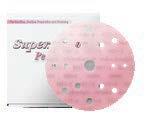

K-240 to K-800 PRIMER / PREP SANDING
K-800 to K-1200 BASECOAT / BLENDING

K-1000 to K-1500 TOPCOAT / FINISHING
Award winning flexible abrasives for scuffing, blending, basecoat, topcoat and more!
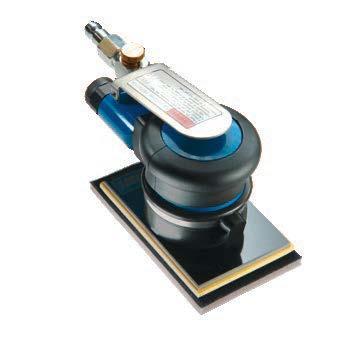


FLEXIBLE POLISHING SHEETS & DISCS

K-2000 to K-3000 TOPCOAT / POLISHING
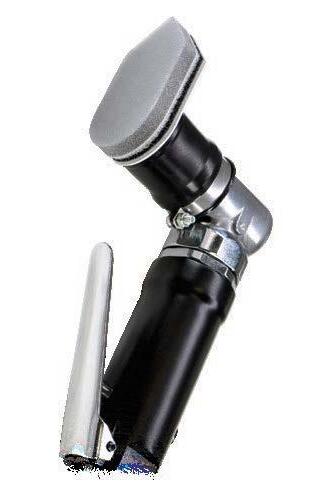



TOUCH-UP SANDING

K-800 to K-1200 REMOVE RUNS & SAGS
K-1200 to K-3000 REMOVE NIBS & TEXTURE
Eliminate imperfections, not your paint job. Paint correction without the mess of water.

SEE US AT SEMA 2023
BOOTH #33131
Utilize the same technologies as Super Assilex to reduce buffing times by 50% or more! Available


AAA’s Your Driving Costs (YDC) has been a reliable data source for the expenses associated with owning and operating a brand-new vehicle for more than seven decades.

Based on the latest figures, the average cost of owning and operating a new vehicle in 2023 has increased significantly, with an annual expense of $12,182 or a monthly cost of $1,015. This is a sharp increase from 2022 when the average yearly cost was only $10,728, or $894 monthly.
The overall average manufacturer’s suggested retail price (MSRP) of the new vehicles in the 2023 YDC study is $34,876. This is $1,575 (4.7%) higher than last year.
“It’s important for car buyers to clearly understand the costs associated with owning a new vehicle,” said Greg Brannon, AAA’s director of automotive research. “Due to global supply chain issues and constrained inventory of new vehicles, car prices rose
dramatically in 2022. And while the situation continues to improve, the spillover effects are keeping prices high.”
owning a new vehicle is also likely driven by:
• Depreciation, which is the difference between the car’s value upon purchase and the value of the car when sold. According to this year’s YDC projections, new vehicles are expected to depreciate by an average of $4,538 per year over five years of ownership, up 24% over 2022.
• The jump in new vehicle prices (up almost $1,600) compared to used vehicle values that have experienced a decline in the past year.
likely accounted for by higherthan-expected inflation, according to the U.S. Energy Information Administration (EIA).
It is important to note MSRP does not always correspond to a consumer’s actual purchase price and may vary depending on demand. Furthermore, a higher sticker price directly impacts finance costs, with this year’s vehicles boasting an average annual finance charge of $1,253, a staggering 90% increase from the previous year.
The change in the annual cost of
• Automakers across the board have focused on producing more oversized, luxurious, and expensive vehicles, loaded with extra features that bump up prices even more.
Compared to last year, one of the higher annual cost categories was fuel, but this year’s average cost per mile has decreased by roughly 2 cents per mile. It’s worth noting the cost of charging EVs has actually increased, by almost 2 cents per kWh over last year, from 13.9 cents per kWh to 15.8 cents per kWh. The increase is
Given their size, fuel economy and prices, it should come as no surprise that ½-ton pickups have the highest average driving cost among all vehicle categories covered in the YDC study. Interestingly, the pickup truck market has slowed over the last 12 months as gas prices trend high and financial costs climb. Pickup trucks excel at hauling and towing, although many buyers do not use them for these purposes. Potential buyers should remember the unique capabilities of pickups come at a high cost of more than $1 per mile.
“The once popular pickup truck is now seeing a slight decline in demand as these vehicles have become increasingly expensive, rivaling the price of many luxury cars,” said Brannon. “As interest rates continue to climb, this adds a layer of expense per month that consumers should consider when shopping for their next vehicle.”
Source: AAA
“Due to global supply chain issues and constrained inventory of new vehicles, car prices rose dramatically in 2022. And while the situation continues to improve, the spillover effects are keeping prices high.”
— GREG BRANNON AAA’S DIRECTOR OF AUTOMOTIVE RESEARCH
The most versatile prep station available today, the Mobile Work Station® is per fect for adding capacity and exibilit y, while maximizing your workspace and productivity.

This por table prep station provides a clean, enclosed area for prepping & limited high quality nishing any where in your shop — instantly.

No ventilation or air make -up


Reduces energy use






Keeps air in your shop clean and clear of overspray







The National Highway Traffic Safety Administration (NHTSA) revised its stance on Massachusetts’ “right to repair” law, saying Aug. 22 it “strongly supports” right to repair and may have found a way to allow independent repairers access to vehicle data without compromising the safety of that data.
The letter came a bit more than two months after NHTSA’s last comment on the subject. On June 13, it sent a letter to 22 automakers telling them not to comply with the state’s Data Access Law, which had finally gone into effect June 1—2.5 years after being approved by voters in November 2020. In that letter,
exploit vulnerabilities at scale to access multiple vehicles, including, importantly, when vehicles are driven on a roadway. Such a short-range wireless compliance approach, implemented appropriately, therefore would not be preempted [by the federal Vehicle Safety Act.]”
NHTSA asked state officials to confirm a solution allowing wireless access when in close physical proximity to the vehicle would be compliant with the state law.
NHTSA also said, based on its discussions with the state, there is a common understanding that implementing a secure open access platform, as required in the law, is not yet available, and that vehicle manufacturers may need time to develop and test that technology, but
data, procedures and prescribed tools to accomplish a proper repair.”

Two organizations—the Auto Care Association and CAR Coalition— that have long supported right to repair laws at the state and federal levels, including Massachusetts’ law, commended NHTSA for revisiting its position, but said more needs to be done.
implement the Data Access Law safely and promptly. We look forward to the auto manufacturers’ compliance with the law.”
Under the state law, such a platform might use cellular, Wi-Fi and Bluetooth. The association said it does not support a Bluetooth solution to allowing access to that data.
“Short range wireless communication does not create the level playing field expected by the voters of Massachusetts,” it said. “The Auto Care Association looks forward to the opportunity to continue the discussion on a viable solution to implement the law that protects both drivers and their security.”
NHTSA said it had “significant safety concerns” with allowing open remote access to vehicle telematics, as required by the law.
In the Aug. 22 letter, addressed to Massachusetts Assistant Attorney General Eric Haskell, NHTSA said it has been working with the state’s Office of the Attorney General, as well as the U.S. Department of Transportation and other federal partners, to identify a solution: giving independent repair facilities wireless access to a vehicle from within close proximity, without providing longrange remote access.
Vehicle manufacturers could use short-range wireless protocols, such as Bluetooth, to allow the vehicle owner or an independent repair facility to access all “mechanical data,” as defined by the law, for that individual vehicle.
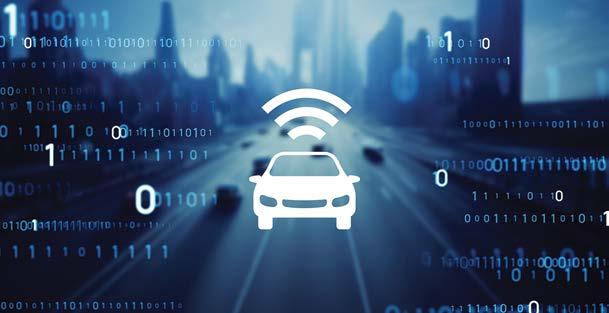
“In NHTSA’s view, a solution like this one, if implemented with appropriate care, would significantly reduce the cybersecurity risks—and therefore the safety risks—associated with remote access,” the letter said. “Limiting the geographical range of access would significantly reduce the risk that malicious actors could
NHTSA is open to continuing to work with the state and other stakeholders on that option.
In July, the Society of Collision Repair Specialists (SCRS) and the Alliance for Automotive Innovation, a trade group representing automakers, along with the Auto Service Association, signed a pact stating independent repair facilities shall have access to the same diagnostic and repair information automakers make available to authorized dealers.
Aaron Schulenburg, executive director of SCRS, said he is not certain what NHTSA’s concerns or comments surrounding Massachusetts’ law mean to the repair process, or that they have any direct impact on the pact signers’ perspective at this point.
“From our experience, independent collision repair facilities are not currently struggling to gain access to the data or tools they need to fix the vehicles properly,” Schulenburg said.
“What collision repair businesses do struggle with today are insurance claim settlement practices that place economic pressure on consumers and independent businesses and discourage the use of available repair
“The Auto Care Association is gratified by NHTSA’s acknowledgement the Data Access Law is not preempted by the federal Vehicle Safety Act and by its latest statement that NHTSA strongly supports the right to repair,” the Auto Care Association said in a statement. “The Auto Care Association further supports Attorney General Andrea Joy Campbell’s stalwart efforts to ensure that vehicle manufacturers
“After three years, it’s more than past time the will of the voters be recognized and that Massachusetts consumers have access to their vehicle data,” said Justin Rzepka, executive director of the CAR Coalition. “We thank NHTSA for finally agreeing that data can be shared safely with car owners but their solution is wholly inadequate and is no substitute for a federal vehicle right to repair law. Vehicle owners throughout the country deserve protections that will safeguard their rights and prevent a patchwork of state regulations.
“A short-range wireless compliance approach, implemented appropriately... would not be preempted [by the federal Vehicle Safety Act.]”
NHTSA
LIGHTWEIGHT, LOW PROFILE precision balanced design delivers superior control
RUBBERIZED DYNAGRIP delivers reduced vibration and increased insulation resulting in greater operator comfort and reduced fatigue

TOOL CAN RUN 5" OR 6" PADS
DUAL RUBBER SUPPORTS provide incredible stability when the machine is not in use
SINGLE-ACTION LOCK TRIGGER
ERGONOMICALLY-DESIGNED EXTENDED HANDLE for increased operator comfort during use

2 TOOLS - IN -1
#RespectTheFinish
Follow us on Instagram: @dynabrade_auto
Cuts like a rotary, finishes like a DA!

Idalia’s cost will be in billions and will put additional strain on Florida’s insurance industry.
The Category 3 storm—winds of 111-129 mph on the SaffirSimpson Hurricane Wind Scale— made landfall Aug. 30 near Keaton Beach in the Big Bend region of the Gulf Coast, one of the largest to hit the area in a century. Trees and powerlines were downed amid a 7-foot storm surge that flooded homes close to the coast.
A report from Moody’s Analytics released Sept. 6 stated in total, private insured losses are between $3 billion and $5 billion, while the National Flood Insurance Program will see a loss of $500 million.
Preliminary estimates since Sept. 1 have pinned total economic losses in the U.S. at around $20 billion.
In December, state lawmakers passed property insurance legislation Senate Bill 2-A in an effort to quell excessive litigation, a main factor in Florida’s rising
insurance costs.
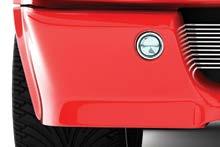


The bill also raised the eligibility threshold for the Citizens Property Insurance Corp., the state-run insurer designed to be a fallback for Floridians unable to get insurance elsewhere.
need to happen quickly to avert a crisis.
“Hurricane Idalia adds further evidence and pressure on legislators to implement changes that will enable a more resilient insurance marketplace for consumers and insurers,” he wrote. “Traditional regulatory models, which were designed to protect consumers, are now failing consumers at scale and at an accelerating rate.”
Walther added insurers are abandoning certain markets, because constraints caused by supply chain issues, inflation and increasing climate events are impeding “their ability to achieve rate adequacy.”


Crash Champions on Aug. 29 announced Eric Pitt has joined the executive leadership team as chief financial officer.
Pitt joins the Crash Champions executive leadership team after previously serving as CFO at HGreg, a major independent automotive dealer with locations across the U.S. and Canada.


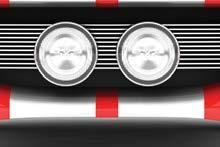

Pitt joins Crash Champions at a time of significant growth, having added more than 400 repair centers to its network since the start of 2022. Crash Champions operates more than 600 locations across 36 states and Washington D.C.
However, Citizens is intentionally priced noncompetitively and is one of the most expensive insurers in the state. A $400,000 policy can cost around $6,000 annually.
Pete Walther, president and CEO of Marsh McLennan Agency’s Private Client Services division, told The Center Square in a written statement that changes
“The recent insurer announcements are forcing states like California and Florida to consider more flexible approaches to insurance,” Walther said. “The focus is now shifting from a rate conversation to a capacity conversation, and the states have no choice but to think differently today to enable a stable and reliable insurance market for consumers.”

Throughout his career, Pitt has overseen large-scale accounting and finance teams that have supported the acquisition and integration of more than 150 automotive dealerships accounting for north of $15 billion in revenue. Prior to his role with HGreg, Pitt worked at Lithia Motors, Inc., a publicly traded Fortune 500 company, as vice president of investor relations and treasurer.
Source: Crash Champions“Hurricane Idalia adds further evidence and pressure on legislators to implement changes that will enable a more resilient insurance marketplace for consumers and insurers,”
PETE WALTHER PRESIDENT AND CEO OF MARSH MCLENNAN AGENCY’S PRIVATE CLIENT SERVICES




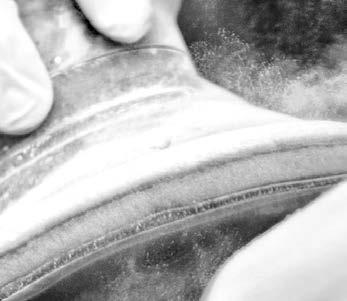


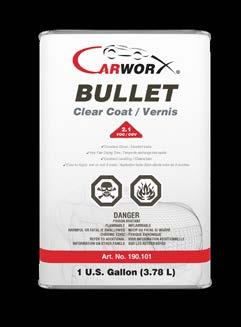


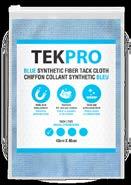

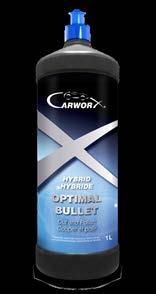






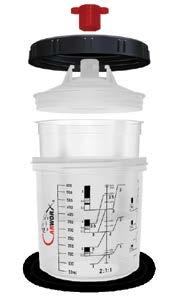
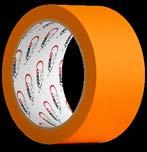





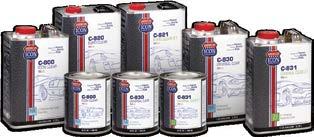
DENSO, a leading mobility supplier, has been named to Forbes’ 2023 roundup of America’s Best Employers by State, appearing on the Tennessee list.


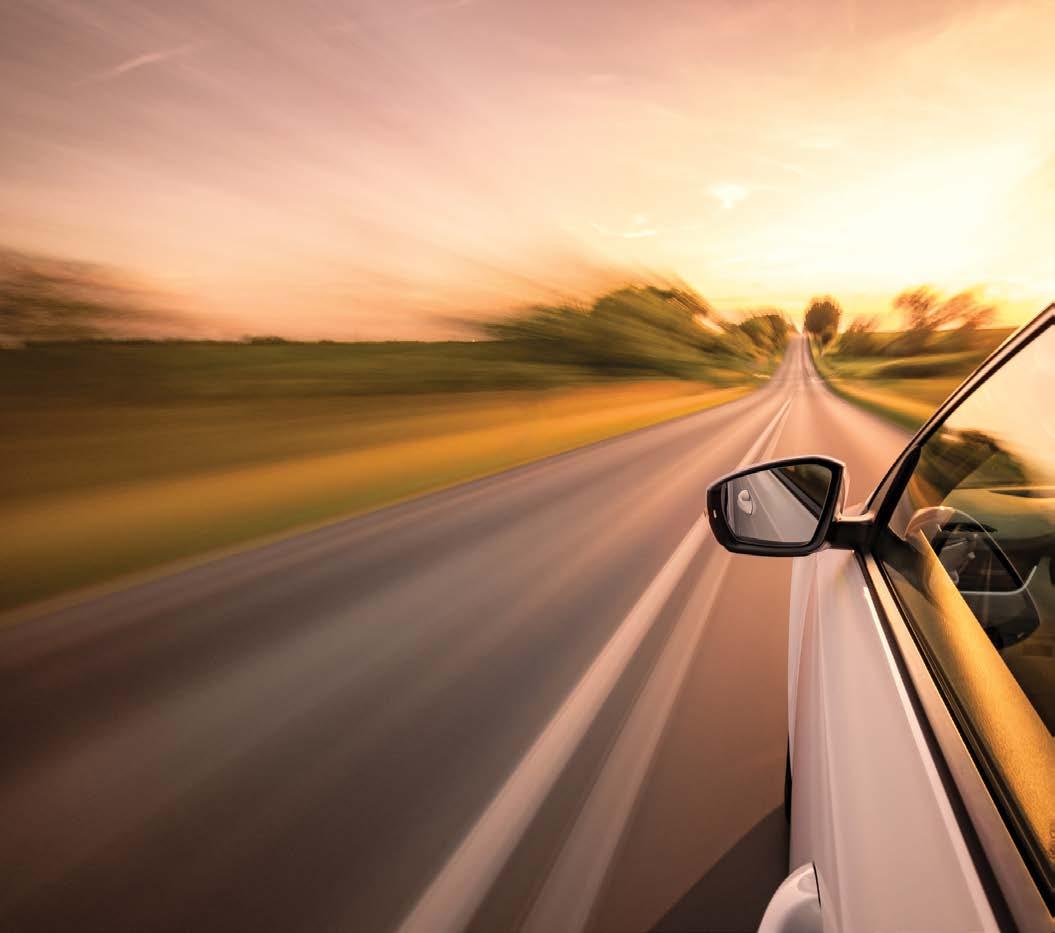
To determine the recognized companies, Forbes and market research firm Statista surveyed 70,000 workers across the U.S. at businesses with at least 500 employees.

Participants were asked if they would recommend their employer to others and to evaluate their employer based on working conditions, diversity, compensation packages, potential for development, company image and more, according to Forbes. They also assessed employers beyond their own.
“While we are honored to





Marty Deschenes, leader of DENSO’s South-Sub Region and president of the company’s Athens, TN, location. “Each of our locations in the state are not only critical to making DENSO a great place to work, but also to advancing our mission of contributing to a better world.”
DENSO employs more than 6,000 people at sites across Tennessee, a state it has called home for nearly 40 years. While manufacturing facilities in Athens and Maryville produce cutting-edge technologies that are powering the shift to safer, more electrified mobility, the Mt. Juliet logistics center helps distribute those products to DENSO sites and customers across North America.
Together, they collaborate in providing team members


Please contact these dealers for your Honda or Acura Genuine parts needs.
Carlock Honda Birmingham
800-987-0819
205-949-5457
Dept Hours: M-F 8-6 robert thompson@carlockcars com
AutoNation Honda
Clearwater Clearwater
888-205-2564
727-530-1173
Dept Hours: M-F 7-7; Sat 8-5; Sun 10-3 santosr1@autonation com
AutoNation Honda
Hollywood Hollywood
800-542-8121
954-964-8300
Dept Hours: M-F 7-7; Sat 7-5; Sun 9-5 hernandeze@autonation�com
Classic Honda
Orlando
888-893-4984
407-521-1115
Dept Hours: M-F 7-7; Sat 8-4 parts@classichonda com
Headquarter Honda
Clermont
800-497-2294
407-395-7374
Dept Hours: M-F 8-7; Sat 8-5 pepe guevara@headquarterhonda com
ACURA
FLORIDA
Acura of Orange Park
Jacksonville
888-941-7278
904-777-1008
Dept� Hours: M-F 7-8; Sat 7-5; Sun 9-3 msweeney@acuraoforangepark com
Duval Acura
Jacksonville
800-352-2872
904-725-1149
Dept Hours: M-F 7-7; Sat 8-5
Cecil adams@duvalacura com
Hendrick Honda
Pompano Beach
Pompano Beach
954-425-8244
Dept Hours: M-Fri 7-6; Sat 7-5; gerardbruno@hendrickauto com
Holler Honda Orlando
407-442-1938
Dept Hours: M-F 7-6; Sat 7-4 parts@hollerhonda com
Rick Case Honda
Davie
877-544-2249
Dept Hours: M-F 7-7; Sat 7:30-4 robbutton@rickcase com
South Motors Honda Miami
888-418-3513
305-256-2240
Dept Hours: M-F 8-7 mfranceschi@southhonda com
Carey Paul Honda
Snellville
770-985-1444
Dept Hours: M-F 7-7; Sat 7-6 gperkins@careypaul com
Ed Voyles Honda
Marietta
800-334-3719
770-933-5870 Direct
Dept Hours: M-F 7-7; Sat 7-6 hondaparts@edvoyles com
FLORIDA
Rick Case Acura Fort Lauderdale
800-876-1150
954-377-7688
Dept Hours: M-F 7:30-6; Sat 8-5 rubenramos@rickcase com
Jackson Acura Roswell
877-622-2871
678-259-9500
Dept Hours: M-F 7-6; Sat 7:30-6 kmcmillan@jacksonacura com
Gerald Jones Honda Augusta
800-733-2210
706-228-7040
Dept Hours: M-F 7:30-6; Sat 8-5 tdunn@geraldjoneshonda com
Honda Mall of Georgia
Buford/Gwinnett
678-318-3155
Dept Hours: M-F 7-7; Sat 7-5 cdunlap@penskeautomotive com
Milton Martin Honda
Gainesville
770-534-0086
678-989-5473
Dept Hours: M-F 7:30-6 robertthomas@mmhonda com
Honda of Newnan Newnan
678-423-8183
Dept Hours: M-F 7-6; Sat 7-4 samuel trapani@henrickauto com
Nalley Honda Union City
866-362-8034
770-306-4646
Dept Hours: M-F 7:30-7; Sat 8-5 hondawp@nalleycars com
MISSISSIPPI
Patty Peck Honda
Ridgeland
800-748-8676
601-957-3400
Dept Hours: M-F 7:30-6; Sat 8-5 pmartin@pattypeckhonda com
Nalley Acura Marietta
800-899-7278
770-422-3138
Dept Hours: M-F 7-7; Sat 7-5 byoung@nalleycars com
Flow Acura
Winston-Salem
800-489-3534
336-761-3682
Dept Hours: M-F 7:30-6; Sat 8-1 www flowacura com
Apple Tree Honda
Asheville
800-476-9411
828-684-4400
Dept Hours: M-F 8-5; Sat 8-4 appletreeparts@hotmail com
McKenney-Salinas Honda Gastonia
888-703-7109
704-824-8844 x 624
Dept Hours: M-F 7:30-5:30 parts@mshonda com
Vann York Automall High Point
336-841-6200
Dept Hours: M-F 7:30-6; Sat 8-3
Fred Anderson Honda Greenville
864-234-6481
Dept Hours: M-F 7:30-6; Sat 8-5 hgrparts@anderson-auto net
Piedmont Honda Anderson
800-849-5057
864-375-2082
Dept Hours: M-F 7:30-6; Sat 8-5 swhite@piedmontcars com
Karen Radley Acura Woodbridge 800-355-2818
703-550-0205
Dept Hours: M-F 7:30-5:30; Sat 8-3 coreythompson@radleyautogroup com
Airport Honda Alcoa
800-264-4721
865-970-7792
Dept Hours: M-F 7:30-6:30; Sat 7:30-5 parts@airporthonda com
AutoNation Honda
West Knoxville Knoxville
800-824-1301
865-218-5461
Dept Hours: M-F 7:30-6 rossd1@autonation com
Wolfchase Honda
Bartlett
800-982-7290
901-255-3780
Dept Hours: M-F 7-7 ekerr@wolfchasehonda com
Checkered Flag Honda Norfolk
800-277-2122
757-687-3453
Dept Hours: M-Sat 7:30-6 honda checkeredflag com
Hall Honda Virginia Beach
800-482-9606
757-431-4329
Dept Hours: M-F 8-7; Sat 8-5 fox@hallauto com
Valley Honda Staunton
800-277-0598
540-213-9016
Dept Hours: M-F 7:30-5:30; Sat 9-5 bwimer@myvalleyhonda com
West Broad Honda Richmond
800-446-0160
804-672-8811
Dept Hours: M-Fri 7:30-6:30; Sat 8-5 wbhonda@aol com
Honda and Acura Genuine Parts is an online ordering portal for repair facilities to order parts directly from the Honda/Acura Dealer(s) of their choice.
rebuilding starters and alternators for garages/gas stations that served as auto shops.
“We created a network of people,” Schuman said. “We’d run a truck two days a week, and we had 40 consignments all over Fort Myers and Cape Coral.”
Ken’s worked with various entities throughout the years, including Caterpillar, shrimp fleets on Fort Myers Beach, the city of Cape Coral and more. The shop has seen a few facelifts and expansions, and now has three bays in the back with a shop chock full of equipment and informative materials.
“It just grew and grew,” Schuman said. “It got to a point in the late ’80s where it was cheaper to buy the alternators and starters than it was to rebuild. At that point, we performed full-service automotive from then on. You’ve got to change with the times.”
For Schuman, the fun part of the business is the people.
“Every once in a while, we’ll get something fancy in and get all excited about it, but the people—I’ve got some of the greatest customers and loyal customers.”
He remarked how so many customers come in and plead for him not to retire.



“I’ve always said as long as my health is good, I’m here. I would miss the people terribly,” he said. “It’s a challenge keeping up with the changes, but we keep up to speed. There’s a lot of things available to a repair shop now that weren’t available 50 years ago.”
Schuman said one of the challenges over the years has always been finding the right help, but his current lead tech is the best he’s had.
As an example of how long the business has been around, Schuman noted how Lee County Commissioner Brian Hamman’s father was the first technician at Ken’s.
Currently in the shop? A V12 Jaguar with fuel injector hoses leaking on the engine. “We’re going to replace all of the hoses on there so we don’t have a fire going,” Schuman said.
The love of cars runs deep for Schuman, and his grandfather had a six-story garage in Akron, OH, when he was growing up. His father owned three different gas stations in Cleveland where they repaired cars.
“When you grow up with it—I painted my first car when I was
14,” Schuman said. Schuman served in the U.S. Navy, and worked on submarine engines in Key West. Schuman had never been to Florida, and very much enjoyed the warm climate. When he got out of the service and started a family, he worked for Sears as a manager. After success with the company, he decided to move the family to Cape Coral and built his house in 1972.
Schuman managed Cape Coral Little League for some time, and was involved with other community activities.
“It was a great, little small-town atmosphere,” he said. “I sit back and think of the early days and what big changes we’ve seen. I never thought we’d be open for 50 years.”
Schuman has five children, all of whom he speaks highly of: Donna, Kim, Karen, Brian and Kenny. All have fond memories of the shop and, more importantly, quality time with their father.
“I have many fond memories of working at my father’s shop that began in grade school and extended through high school and college,” Brian said. “An early foundation was laid by learning how to mop floors, stock parts and clean the alleyway between Dad’s shop and the adjoining building. As I got older, this evolved into rebuilding
starters and alternators, changing oil and mounting tires. The most fun part of being at the shop was working with my father and brother to restore and hot rod various project cars.
“I learned many things from my time at the shop including a strong work ethic, how to function as a team, the importance of treating people with respect and being ethical in all you do,” Brian said. “These attributes have served me well in my adult life.”
“My favorite memory from dad’s shop was during construction of the addition. We got to roller skate all around the floor,” said Karen.
Kenny remembers he and Brian down at the shop, helping clean up and even learning how to rebuild starters and alternators. He recalled on weekends going to help Schuman with his personal project, such as his ’35 Ford Coupe.
“I remember that one customer’s car we worked on was a red Ferrari which was previously owned by Willie Nelson,” Kenny said.
“One of two fond memories was when Dad was putting on the store addition and the slab was poured and he would let us roller skate on the smooth cement, way better than the shell roads back then,” Kim said. “The other is when I was around
and would get out of pre-school around lunch time and my dad would give me a bite of his sandwich.”
Donna spent quite a few summers working in the shop in high school and also right out of college.
“From cleaning the back bays, to driving customers home and running for parts, I did a little bit of everything—except for work on the cars of course,” said Donna, whose last name is now Germain. “I loved watching my dad’s interaction with his customers, vendors and how he ran the business. He’s always been a hands-on owner; first one there, last one to leave and dedicated beyond belief. I am proud to have inherited his work ethic. Congratulations Dad, we all love you and appreciate the life and legacy you and Mom have built for us.”
On recent morning at the shop, a man from New York who had just moved to the Cape walked into the lobby. Schuman met him with a friendly hello, and joked with the man about being from New York, as he had a strong accent. The man said he had heard Ken’s works on classic cars, and inquired if the shop could help him out. What he’s been doing successfully for the past 50 years was on full display, as Schuman asked the right questions and assured the man he would help figure out what was

going on with his vehicle.
With a “pleasure to meet you” and a handshake, it seemed as if another customer was on their way to being relieved of their auto troubles thanks to Ken’s.
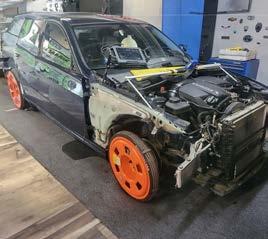
“Our business philosophy is different than some shops,” Schuman said. “We’ve always operated under, ‘If it ain’t broke, don’t fix it.’ My dad was always an honest businessman, and that’s where it started. I know what’s right and wrong.”
As a testament to what he means to the community, many residents stopped by on their way out of Florida following Hurricane Ian to say thank you to Schuman.
“People kept saying they didn’t want to face a hurricane again next year,” he recalled.
Ken’s Auto Repair is open Monday through Friday from 8 a.m. to 5 p.m., and is at 4533 Del Prado Blvd.
For more information, visit kensautorepaircapecoral. com or call 239-542-5540.
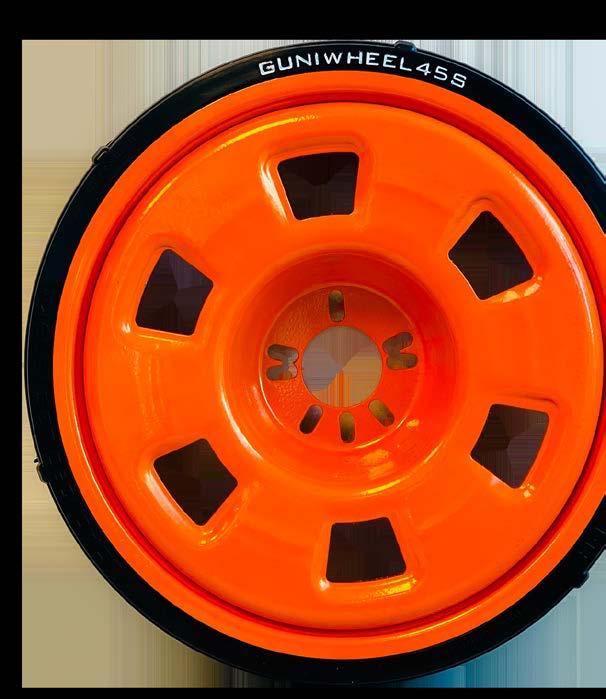 By T.A. DeFeo The Center Square
By T.A. DeFeo The Center Square
An automotive parts company plans to establish a new manufacturing facility in Candler County, GA.
State officials said DAS Corp.’s investment, coupled with “collaborative indirect investments,” will total more than $35 million. The new Metter facility will create 300 jobs.
“The project is still active, and Georgia Quick Start is involved,” a Georgia Department of Economic Development representative confirmed to The Center Square in an email. The designation allows state officials to decline to release how much the state offered in incentives.
DAS, a Kia Motors Manufacturing Georgia and Hyundai Motor Group supplier, designs and manufactures
seating systems and structures and safety seating components.
“Our logistics assets, including a reliable network of rail lines and highways, connect companies like DAS to key business partners in all corners of the state and to markets across the world, providing direct benefits to Georgia communities,” Gov. Brian Kemp, a Republican, said in an announcement.
The company will primarily produce automotive seat structures at its planned Candler County Industrial Park facility. Operations should start toward the end of 2024.
“The impact on our community will be transformative, stimulating investment in housing, creating other business opportunities, and improving the social economic wellbeing of our citizenry,” Metter Mayor Ed Boyd said in an announcement.
Tesla received a special order from the National Highway Transportation Safety Administration (NHTSA) regarding its Autopilot investigation launched in June 2022, which was upgraded from a preliminary evaluation initiated in August 2021.
On July 26, the NHTSA wrote a letter to Tesla’s senior director of legal expressing concerns about Autopilot and its ability to alert drivers of their attentiveness, or lack thereof, when using the driver assistance feature.

“Recently, NHTSA became aware that Tesla has introduced an Autopilot configuration that, when enabled, allows drivers using Autopilot to operate their vehicles for extended periods without Autopilot prompting the driver to apply torque to the steering wheel,” the letter said. “NHTSA is concerned that this feature was introduced to consumer vehicles and, now that the existence of this feature is
known to the public, more drivers may attempt to activate it. The resulting relaxation of controls designed to ensure that the driver remain engaged in the dynamic driving task could lead to greater driver inattention and failure of the driver to properly supervise Autopilot.”

Tesla was instructed to respond to the special order by Aug. 25 or face fines of up to $26,315 daily.


the software update “that reduces or eliminates instances in which Autopilot prompts the driver to apply torque has been enabled.”
3. Detailed steps or conditions necessary to revert a vehicle whose software update was activated to its ordinary state.



4. Differences between the setting in the software update that “reduces or eliminates instances in which Autopilot prompts the driver

authority.
6. Tesla’s basis or purpose in installing the subject software in road consumer vehicles “beyond the Tesla engineering vehicles, including but not limited to the justification for which consumer vehicles or vehicle owners were eligible for the subject software update.”

7. Any lessons learned/findings from driving vehicles with subject software update enabled.

8. Documents explaining subject software’s functionality.
9. Test plans or instructions given to Tesla engineering staff responsible for driving engineering vehicles with the software update.
Bloomberg initially reported on the NHTSA’s special order. The NHTSA shared the documents with Teslarati.

Tesla was required to submit the following to the NHTSA:
1. Details and dates of software updates, when they were introduced to Tesla engineering and then to consumer vehicles.
2. Steps to activate the setting in


to apply torque when enabled and when not enabled to Autopilot’s driver monitoring system, including the amount of time Autopilot is allowed to operate without prompting application of torque, and any warnings or chimes that are presented to the driver.”
5. Other changes in the vehicle’s user inference, Autopilot functionality or vehicle control
10. Crash and incident reports from collisions or near-misses involving vehicles with software update enabled.

NHTSA Administrator Ann Carlson said the Autopilot investigation would “get to a resolution…relatively soon.”




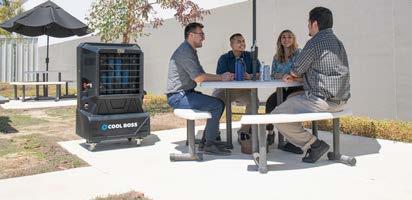


If you are looking to get your car fixed anytime soon, you could be waiting weeks, if not months, to get into the shop.


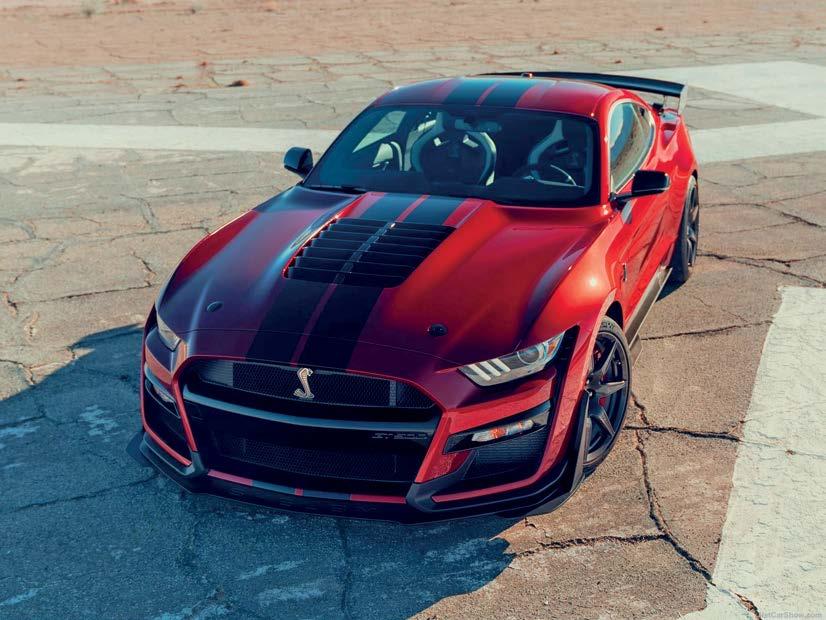
“Very, very steady. Busy, busy,” said Thomas Kazanji, collision consultant at McClure Collision.
The auto body shop is booked out for nearly three months.
This time two years ago, the long wait time would have been due to part delays. Now, Kazanji has a hunch their constant bookings have something to do with an uptick in bad driving habits.
“We all understand that people have phones now. They are being more attentive to their phone than being attentive to the road and where they are driving,” he said.
Since the pandemic, the Department of Transportation has seen an increase in traffic fatalities and wrecks. Unfortunately, North Carolinians rank among the worst drivers in the country.
Last year, national insurance

agency Insurify ranked North Carolina as eighth in the nation for most car accidents.

“We have been here for 20 years, and we just have an influx of work. We are extremely busy,” Kazanji said.
Scott Benavidez, chairman of the Automotive Services Association and owner of a repair shop in New Mexico.
Benavidez said the technician shortage became apparent following the pandemic. He said as the older generation of trained technicians retire, shops are struggling to replace them.
“Across the nation, when we go to collision industry conferences, this is the number one issue that we here is the lack of technicians,” he said. “In fact, we’ve started trying to get back to the high schools to recruit technicians because they are just not coming in like they used to.”
While shops continue to see a never-ending line of customers at their door, the industry is working overtime to keep up.
EVgo Inc., one of the nation’s largest public fast charging networks for electric vehicles, and General Motors have surpassed 1,000 fast charging stalls as part of their longstanding collaboration to expand fast charging infrastructure. First announced in 2020 and expanded upon in 2021, the collaboration will lead to the development and installation of 3,250 DC fast charging stalls in major metro markets.
On top of shops seeing more drivers coming in for repairs, they are also dealing with a shortage of technicians.
“Everybody that I talk to in my industry is at least one man down if not a man and a half,” said
“We are healthy. We are surviving. We are making money. The unfortunate thing is the time frame and the time element and the length of the repair date, sending them back two, two and a half months. I have a heart. I feel bad for those people,” Kazanji said.
To date, EVgo and GM have opened fast charging stalls across nearly 230 locations in 39 markets covering 27 states, with the majority featuring highpower 350kW fast charging. EVgo and GM are working together to broaden access to public charging where EV drivers already spend time, such as grocery stores, retail centers and city centers, while also serving the need for customers who are unable to charge at home or work, such as renters and those living in multifamily dwellings. For more information, visit www.evgo.com.
Source:GM
“We are healthy. We are surviving. We are making money. The unfortunate thing is the time frame and the time element and the length of the repair date, sending them back two, two and a half months. I have a heart. I feel bad for those people,”
— THOMAS KAZANJI COLLISION CONSULTANT AT MCCLURE COLLISION
after thieves discovered that many of them lacked electronic immobilizers.
Six of the 20 models with the fewest claims for whole vehicle theft are electric vehicles, and six others are manufactured by General Motors.
Typically, electric vehicles are stolen less frequently than other models. This may be because they are often parked overnight in well-lit and comparatively secure areas for charging.
Several high-end Volvo models also rank among the least-often stolen 2020-22 models, while two variants of the Infiniti Q50 appear among the most-stolen vehicles. The Q50 has been a perennial feature on the most-stolen vehicle list since model year 2014 for reasons that remain a mystery.
By looking at claims per insured vehicle year, HLDI’s theft reports allow people to compare the relative risk of each vehicle. In contrast, other most-stolen-vehicle lists report raw numbers of thefts and are therefore dominated by the most common vehicles on the road.
HLDI’s whole-vehicle theft report differs from its standard theft report, which looks at all theft claims, including those for stolen vehicle
parts or for items taken from a vehicle.
To isolate whole-vehicle claims, HLDI compared the amounts paid for total losses under collision coverage, which is generally the residual value of the vehicle, to payments associated with each theft claim. Theft claims were considered to represent whole-vehicle thefts when the amount was around the same as what would be expected for a total loss under collision coverage for the same vehicle of the same age.
As with all HLDI analyses, the results in the whole-vehicle theft report are adjusted to account for the effect of demographic and geographic factors.
Most-Stolen MY 2020-2022
Vehicles Ranked by Relative Claim Frequency (Average=100)
Dodge Charger SRT Hellcat, 6,128
Dodge Charger HEMI, 2,197
Infiniti Q50, 878
Dodge Challenger, 766
Land Rover Range Rover 4WD, 611
Kia Sportage, 479
Land Rover Range Rover Sport 4WD, 460
Kia Sportage 4WD, 415
Honda CR-V 4WD, 409
BMW X6 4WD, 361
Kia Rio, 359
Kia Forte, 357
Ford F-350 SuperCrew 4WD, 349
BMW X7 4WD, 338
Ford F-250 SuperCrew 4WD, 337
Honda Accord, 306
Ram 3500 crew cab long-wheelbase 4WD, 306
Infiniti Q50 4WD, 287
Nissan Maxima, 284
Honda CR-V, 270
Lowest Claim Frequency for WholeVehicle Theft, Ranked by Relative Claim Frequency
Tesla Model 3 4WD, 3
Tesla Model Y 4WD, 3
Volvo XC90 4WD, 6
GMC Acadia 4WD, 7
Tesla Model X 4WD, 8
Volvo XC40 4WD, 8
Tesla Model 3, 9
Chevrolet Trailblazer 4WD, 10
Lexus UX 250 hybrid 4WD, 10
Volvo XC60 4WD, 10

Buick Envision 4WD, 11
Cadillac XT5, 11
Chevrolet Traverse 4WD, 12
Land Rover Defender 4WD, 13
Buick Encore GX 4WD, 14
Nissan Leaf, 14
Mercedes-Benz GLE-Class, 15
Subaru Ascent 4WD, 15
Tesla Model S 4WD, 15
Volvo XC60, 15
Stellantis is expanding its SPOTiCAR program into the U.S. SPOTiCAR, which first launched in 2019 across 11 countries in Europe, was created to simplify the individual purchasing experiences of customers and businesses, supported by a digital offering and specialized dealerships.
SPOTiCAR offers a selection of pre-owned vehicles across the Alfa Romeo, Chrysler, Dodge, FIAT, Jeep®, Ram and Wagoneer by Jeep brands that are selected, appraised and prepared by specialists across Stellantis, giving customers access to a broader range of vehicles and services. SPOTiCAR vehicles go through comprehensive multipoint checks before they are sold to customers, which include a minimum three-month warranty and available extended warranty, three months of roadside assistance, vehicle history and mileage check, available connected-vehicle services, trials and subscriptions (if equipped), rental car reimbursement, finance options, manufacturer retail experience from trusted brands and professional advice and support.
Source: Stellantis
Source: HDLI
Georgia governments and development authorities have increased their incentives to Hyundai Motor Group, but state officials were cagey in confirming the exact amount.
Last year, Hyundai announced it picked Georgia for its first fully dedicated electric vehicle and battery manufacturing facility. The company initially said it planned to invest more than $5.5 billion to build the facility, and LG Energy Solution subsequently announced it was a partner in the battery manufacturing facility.
In late August, Hyundai Motor Group and LG Energy Solution announced plans to invest an additional $2 billion in a battery cell manufacturing joint venture in Bryan County, prompting state officials to revise the incentives package.

Under the deal, Hyundai plans to spend roughly $7.6 billion on the facility in the 2,923-acre Bryan County Megasite along Interstate 16. Additionally, state officials said
non-affiliated Hyundai suppliers plan to invest roughly $1 billion in the project.


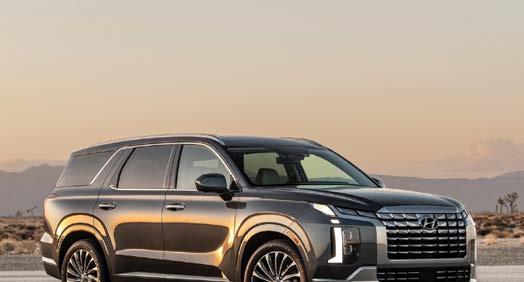
State officials previously confirmed the deal included $1.8 billion in incentives. Under the revised deal, the company will likely receive millions of dollars in additional incentives.
“The only additional discretionary incentive offered by the state for this competitive project was a $2.75 million grant, which reflects the additional jobs being created and investment in the larger commitment by the company,” the Georgia Department of Economic Development executive director of communications told The Center Square in an email. She did not respond to numerous requests from The Center Square to clarify incentive numbers.
The company could receive roughly $223.1 million in state income tax credits, up from about $212.6 million under the previous deal.
Hyundai received a 27-year property tax abatement and will begin making “leasehold ad valorem property tax payments”

starting in 2026 after it completes the initial construction of its facility. State officials previously said Hyundai would pay more than $357 million during the period; now they say the total is more than $523 million.
Under the revised deal, officials increased the value of the Regional Economic Business Assistance grant—doled out in a pair of payments—from $50 million to $52.7 million. The money will help pay for site development, building or equipment purchases.
State officials said Georgia’s Constitution does not allow direct cash grants to companies. So, state officials usually convey money into what they termed “project solutions to aid in speed-to-market for companies.”
The new deal increased Georgia Department of Transportation funding for road improvements from $200 million to $210 million. The deal also calls for the state to pay $62.5 million for designing, building and furnishing a Quick Start Training Center and more than $24.8 million to operate it for five years.
Mitchell, an Enlyte company, on Aug. 24 announced the availability of a new feature in Mitchell Cloud Estimating that automatically detects a completed scan or calibration and gives users the ability to quickly add it as a line on the collision-damage appraisal.


This enhanced integration between carrier and shop workflows helps ensure estimates include the appropriate diagnostic procedures performed. It is also designed to assist independent, staff and shop appraisers with maintaining accurate records while giving vehicle owners added visibility into the repair work completed.


When configured, the new feature automatically detects diagnostic procedures performed on the vehicle with a Mitchell Diagnostics device and indexes the related scan and calibration documents associated with a claim. Then, in the estimating system, it surfaces a list of available scan and calibration operations related to the automobile.
Source: Mitchell






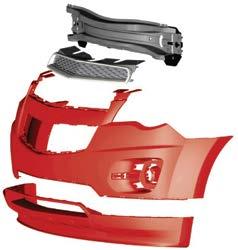




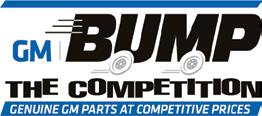


USAA released data on distracted driving trends in the U.S. during the first half of 2023. The data, compiled from USAA’s SafePilot® telematics app, offers valuable insights into the states where drivers are most and least prone to distractions behind the wheel. The data comes at a time when more drivers have returned to the roads as more Americans are working from offices.
Through the first half of the year, USAA has seen an 18% increase in miles driven over the same period in 2022, along with a 10% increase in distracted driving behaviors, providing an opportunity to raise awareness on the importance of avoiding distractions on the roads as it remains a leading cause of accidents and fatalities for Americans.
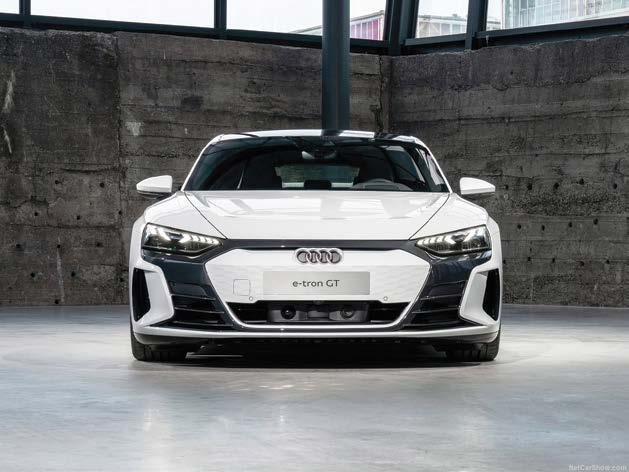


According to the most recent data from the National Highway Traffic Safety Administration (NHTSA), distracted driving claimed 3,522 lives in 2021, a 13% increase over pre-pandemic figures from 2019.
Distracted driving is particularly dangerous because it diverts
a driver’s attention away from the road, increasing the risk of accidents. Common distractions include texting, talking on the phone, eating or using in-car entertainment systems.
“At USAA, we are committed to helping create safer roads for everyone,” said Randy Termeer , USAA president of Property & Casualty. “By staying focused on the road and avoiding distractions, we can protect lives, reduce accidents and make our communities safer for all.”
USAA has compiled data highlighting the top 10 states with the most and least distracted drivers based on their smartphone distraction rates (percentage of driving time that was distracted).
These states exhibited the highest levels of distracted driving incidents, including texting, phone calls and other smartphone distractions that divert drivers’ attention from the road.
1. Mississippi, 17.8 %
2. Louisiana, 16.8 %
3. South Carolina, 16.5 %
4. Alabama, 16.2 %
5. North Carolina, 15.8 %
6. Georgia, 15.5 %
*District of Columbia, 14.9 %
7. Arkansas, 14.7 %
8. Tennessee, 14.5 %
9. Texas, 14.0 %
10. Kentucky, 13.8 %
Top 10 States with the Least Distracted Drivers (January–June 2023)
These states demonstrated a commitment to safe driving practices, with fewer incidents of smartphone distractions compared to the national average of 12.1%.
State, Distraction Rate

1. Vermont, 6.8 %
2. Oregon, 8.0 %
3. Minnesota, 9.1 %
4. New Hampshire, 9.5 %
5. Maine, 9.6 %
6. Washington, 10.1 %
7. Montana, 10.2 %
8. Colorado, 10.3 %
9. Nevada, 10.3 %
USAA encourages all drivers, regardless of their state’s ranking, to prioritize safety behind the wheel. By taking simple precautions, we can collectively make the roads safer for everyone. USAA remains dedicated to promoting safe driving habits and will continue to raise awareness about the importance of distraction-free driving.
Driving data from SafePilot, USAA’s behavior-based insurance app, leverages telematics technology to provide feedback on driving behaviors. SafePilot rewards safe driving with premium discounts; members who enroll receive up to a 10% discount for signing-up and continued policy discounts up to 30% for exhibiting safe driving behaviors. By incentivizing safe driving practices, SafePilot aims to reduce accidents, improve road safety and reward participants with discounts on their insurance.
SafePilot is currently available in 47 states plus Washington D.C.

Source: USAA




Ford on Aug. 28 announced a pilot program with Duke Energy to provide electric vehicle customers in North Carolina with a chance to save money, increase the use of renewable energy and support electric grid resiliency while charging at home.

The EV Complete Home Charging Plan pilot aims to bring more certainty to the cost of EV home charging by providing a low, fixed monthly rate for electricity used in exchange for allowing Ford and Duke Energy to manage charging times to best support the electric grid.
The pilot program will help support electric grid resiliency by seamlessly managing selected customers’ home charging schedules when there is less strain on the grid and when more renewable energy is readily available. Ford EV customers,
along with GM and BMW EV drivers, will receive an invitation to enroll in the program starting in September, with the EV Complete Home Charging Plan pilot officially launching Nov. 1.
“The connectivity features offered in our electric vehicles are revolutionizing the customer experience by creating easy opportunities to save money, support the electric grid and drive toward zero-carbon charging,” said Bill Crider, head of global charging and energy services, Ford Motor Company. “Our pilot program with Duke Energy is another strong example of providing customers with better vehicle ownership experiences, while also supporting our shared grid and sustainability aspirations.”
Source: Ford

Two former Tesla employees are currently facing a lawsuit filed by the EV maker over the leak of the “Tesla Files” earlier this year. The leaked data reportedly includes information—such as social security numbers and other personal identifying information—of more than 75,000 individuals.
Tesla outlined its response to the issue in an advisory notice published by the Maine Attorney General’s Office. The letter included a background into the issue, as well as the steps the company has taken to address the leak.
As noted by Tesla, it was informed by German media outlet Handelsblatt on May 10 that it had obtained confidential information. Later investigations revealed the leak was from two former Tesla employees.
As part of its response to the


data leak, which was reported by the German media outlet as the “Tesla files,” the EV maker said it filed the appropriate legal action against its two former employees. The electronic devices of the two ex-Tesla workers were reportedly seized as well, and the company has obtained court orders that would prevent the former employees from further disseminating the leaked data.
Tesla said it is offering to those affected by the data leak a complimentary membership to Experian’s IdentityWorks, which provides credit monitoring as well as identity detection and resolution services. The company also advised its users to be extremely vigilant against possible phishing attempts, and be extremely thorough with their account statements and credit history.
Source: J.D. Power

Farmers Insurance announced it will part ways with approximately 2,400 employees—11% of its workforce across all lines of business.

“Decisions like these are never easy, and we are committed to doing our best to support those impacted by these changes in the days and weeks to come,” Raul Vargas, president and CEO of Farmers Group, said in a statement Aug. 28.
The Los Angeles-based insurer said the moves are being made to better position itself for longterm profitability by creating a more streamlined organizational structure, and follow a thorough evaluation and reduction of operational expenses across the company.



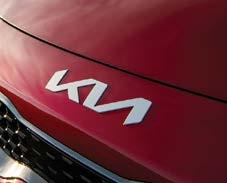
“Given the existing conditions of the insurance industry and the impact they are having on our business, we need to take decisive actions today to better position Farmers for future success,” Vargas said.
Farmers, one of the country’s largest providers of home, auto and small business insurance, said it would in the future share details of a plan to “reinvent how insurance is delivered, simplifying systems and introducing innovation” for employees as well as its exclusive and independent agents.
as 100,000 homeowner, auto and umbrella policies.
In July, the carrier announced it would limit new homeowners insurance policies in California, citing higher costs and wildfire risks. Another plan to issue thousands of nonrenewals to Georgia homeowners had to be revisited thanks to state law.
Vargas said in a statement Farmers must manage risk and prudently align its costs as the industry continues to face macroeconomic challenges.
Polyvance now has a dedicated phone number for making video calls with its customers. Between the hours of 7 a.m. and 4 p.m. Central time, Polyvance will be accepting phone calls, text messages or video calls on the company’s new cell phone. This cell phone can accept video calls using the most popular video calling programs like WhatsApp, FaceTime, Zoom, Skype and Google Duo. The phone number is 256-717-9477.
The layoffs come after Farmers has pulled back from Florida and California in recent months.
Farmers said in June it would halt sales of new homeowners policies in Florida, citing higher costs. In July, Farmers advised the Florida Office of Insurance Regulation it would further reduce business in the state by discontinuing Farmers-branded auto, home and umbrella policies. The pullback could affect as many
“Our leaner structure will make us more nimble and better able to pursue opportunities for growth and ultimately make Farmers more responsive to the needs of our insured customers and agents,” said Vargas.
Vargas, who took over as CEO at the start of the year, recently ordered workers to return to the office in a hybrid model, reversing the company’s policy on allowing most workers to do their jobs from home. Employees within 50 miles of a Farmers office must come in to work at least three days per week starting in September.
Jobber or body shop customers with a question about plastic repair, products or plastic welder setup and maintenance can start a video call to easily show the Polyvance representative their situation. The Polyvance representative will work together with the customer to resolve the issue. Polyvance is also offering a new form of courtesy training that uses the video calling feature. If a customer purchases a Polyvance nitrogen plastic welder and needs immediate training, they can request a video call training session with a representative from Polyvance’s factory.
For more information, email training@polyvance.com.
Source: Polyvance





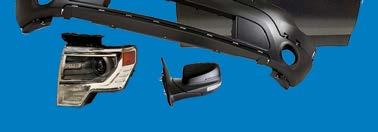





A senior couple from Acworth, GA, is sounding the alarm over what they describe as a deceptive transaction with Dream Auto Collection, a South Florida car dealership. Jeanne Clark and Steve Hawes paid $15,000 for a rare, low-mileage 2003 Lexus LS, only to find themselves without a car and without responses to their refund requests.
Clark and Hawes discovered the vehicle on Dream Auto Collection’s website and saw it as a perfect match for Clark’s 2001 Lexus LS. According to Hawes, they interacted with a man named Sebastian Merfea, who promised the car would be delivered to them once their check cleared.
Not only did they not receive the car, but they later found out it had been registered to another buyer in Kennesaw, GA, just days after their check had been cashed.
Merfea texted the couple claiming the car had power steering issues needing a $5,000 repair, promising a different car in exchange. However, the person who actually received the Lexus confirmed to Local 10 News the car had no such issues.

When Local 10 News visited Dream Auto Collection in Hollywood, FL, co-owner Alex denied the couple’s allegations, calling them “impossible.” When confronted on the phone, Merfea was unable to explain the whereabouts of the vehicle. Alex promised to resolve the situation but failed to provide any further details.
The couple has since filed a police report and is considering additional steps, including contacting the Florida Department of Highway Safety and Motor Vehicles, which licenses and investigates dealerships.

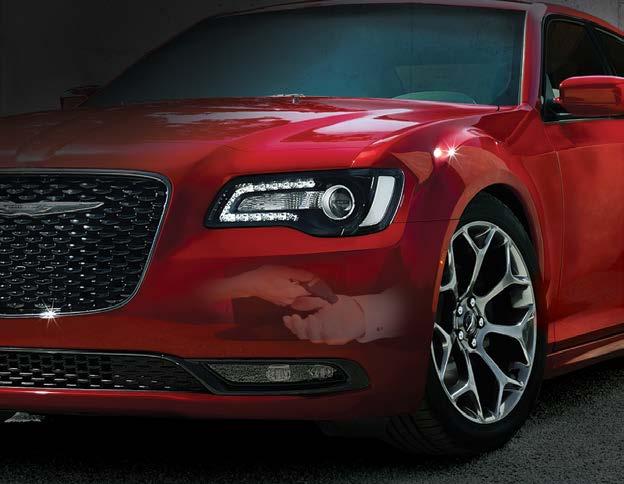
Former Porsche Cars North America president and CEO Kjell Gruner has joined electric vehicle manufacturer Rivian Automotive as chief commercial officer and president of business growth, Rivian announced Sept. 1.
Gruner reports directly to Rivian founder and CEO RJ Scaringe and oversees the company’s commercial functions, including sales, marketing, customer care, delivery, service and fleet.



Before his tenure with Porsche’s North American operation, Gruner was the German automaker’s global vice president marketing and chief marketing officer, responsible for development of the global Porsche brand, marketing and product.
He has also served as director of strategy for Mercedes-Benz.
“We will rely on Kjell’s talent and experience as we position ourselves for growth domestically and internationally, the launch of a new platform in R2 at a
new facility, and the continued success of our commercial vehicle line,” Scaringe said in a news release. “I look forward to working closely together as we tackle this next great wave of opportunity.”
Gruner said he is coming to Rivian at an “important time in its success story,” as the company has created “an exceptional brand” with its R1T pickup, R1S SUV and “category-defining” commercial van.
“As we build a strong brand,” he said, “I look forward to charting paths into new markets, building new partnerships and customer experiences, and engaging with our community while constantly embracing a clear and consistent strategy for the future.”

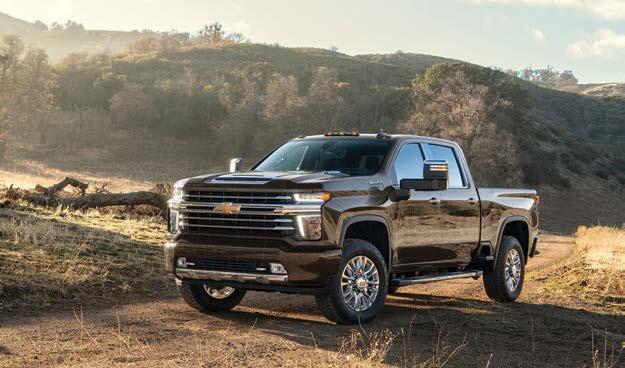
Leading global tire maker Hankook Tire was recognized by Ford Motor Company’s Q1 quality assessment and certification system for its Tennessee Plant. The Clarksville, TN, facility was awarded the Q1 medal, which stands for “Quality is No. 1,” for representing excellence in key areas such as technological innovation, product quality, service capabilities and continuous improvement.
The Q1 medal represents the commitment to a qualityfirst approach. In recognition of the unique basic quality and manufacturing rules of Ford Motor Company, Q1 is an extremely influential benchmark in the automotive industry that demonstrates the quality level of suppliers and is pursued by major auto parts manufacturers around the world.
“Trusted relationships with our OE customers are central to driving Hankook Tire forward,” said Rob Williams, president,
Hankook Tire America Corp.

“The innovation, quality and continued improvement of our Tennessee Plant is key to delivering market-leading products to renowned automakers like Ford Motor Company. We’re proud to see the Tennessee Plant become the latest Hankook Tire facility to earn Ford’s prestigious Q1 medal and look forward to continued success in Clarksville.”
Hankook’s Tennessee Plant supplies tires to popular Ford models such as the new Ford Edge MKX, Ford Explorer and Ford Econoline. The awarding of Ford’s Q1 medal is the latest milestone in the valued relationship between Ford and Hankook Tire, reflecting the tiremaker’s drive for quality in alignment with the esteemed motor company. Hankook’s Jiangsu and Chongqing Plants in China also received Ford’s Q1 medal in May of this year.
Source: Hankook Tire America Corp.
The U.S. government estimated unemployment fraud during the pandemic cost taxpayers up to $135 billion, or about 11% to 15% of the total amount of unemployment insurance benefits paid during the pandemic.
That’s according to the latest report from the U.S. Government Accountability Office, which the U.S. Department of Labor disputes.
“The full extent of [unemployment insurance] fraud during the pandemic will likely never be known with certainty,” according to the report.
The Department of Labor took issue with Government Accountability Office’s fraud estimate, saying it was likely overstated. However, the Government Accountability Office disagreed.
“The unprecedented

demand for UI benefits and the need to quickly implement the new programs during the pandemic increased the risk of fraud,” according to the report. “The increased significance of the UI system during the pandemic drew attention to its vulnerabilities and susceptibility to fraud, waste, abuse and mismanagement.”
Expenditures across the UI system totaled about $900 billion from April 1, 2020, through May 31, 2023, according to Department of Labor. This includes about $230 billion under the regular UI and Expanded Benefits programs and about $670 billion under the pandemic UI programs that expired on Sept. 6, 2021. Twenty-four states ended their participation in at least one of the pandemic UI programs before the programs expired.
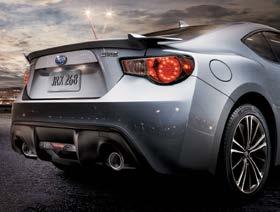

The U.S. Department of Energy (DOE) on Aug. 31 announced a $15.5 billion package of funding and loans primarily focused on retooling existing factories for the transition to electric vehicles (EVs), supporting good jobs and a just transition to EVs, as part of President Joe Biden’s Investing in America agenda.


This includes making available $2 billion in grants and up to $10 billion in loans to support automotive manufacturing conversion projects that retain high-quality jobs in communities that currently host these manufacturing facilities.
In the Domestic Conversion Grant Program, higher scores will be given to projects likely to retain collective bargaining agreements and/or those that have an existing highquality, high-wage hourly production workforce, such as applicants that currently pay top quartile wages in their industry.

The DOE also announced it will make available $3.5 billion in funding to expand domestic manufacturing of EV batteries and the nation’s grid, as well for battery materials and components currently imported from other countries.
Together, these federal investments underscore Biden’s deep
commitment to helping retain and expand high-paying manufacturing jobs while empowering workers to have a strong voice in and capture the economic benefits of the clean
Biden understands that building the cars of the future also necessitates helping the communities challenged by the transition away from the internal combustion engine.”
to manufacture electric vehicles and components. Supported by Biden’s Inflation Reduction Act, the Domestic Manufacturing Conversion Grants for electrified vehicles program will provide cost-shared grants for domestic production of efficient hybrid, plug-in electric hybrid, plug-in electric drive and hydrogen fuel cell electric vehicles.



This program will expand manufacturing of light-, medium- and heavy-duty EVs and components and support commercial facilities including those for vehicle assembly, component assembly and related vehicle part manufacturing.





energy transition. The Investing in America agenda is also enhancing national security by building up the domestic supply chains necessary to reach the administration’s ambitious climate goals.
“President Biden is investing in the workforce and factories that made our country a global manufacturing powerhouse,” said U.S. Secretary of Energy Jennifer M. Granholm. “Today’s announcements show that President
Depending on their capital needs, manufacturers can apply to receive assistance via financial grants through DOE’s Office of Manufacturing and Energy Supply Chains (MESC) or preferable debt financing through DOE’s Loan Program Office.


DOE announced a new $2 billion funding opportunity to spur the conversion of long-standing facilities
The program aims to support a just transition for workers and communities in the transition to electrified transportation, with particular attention to communities supporting facilities with longer histories in automotive manufacturing. Preference will also be given to projects that commit to pay high wages for production workers and maintain collective bargaining agreements.
Projects selected for this funding must also contribute to Biden’s Justice40 Initiative, which aims to advance diversity, equity, inclusion and accessibility in America’s workforce
and ensure every community benefits from the transition to a clean energy future. This funding supports goals and targets detailed in the 100-day reviews under “America’s Supply Chains and the Federal Consortium for Advanced Batteries’ National Blueprint for Lithium Batteries,” an executive order which provides a path to building a strong domestic battery supply chain and accelerating the development of a robust, secure and equitable domestic industrial base by 2030.
Concept papers are due Oct. 2 and the deadline for full applications is Dec. 7.

DOE is also making up to $10 billion in loan authority available for applications under the Advanced Technology Vehicles Manufacturing Loan Program for automotive manufacturing conversion projects that retain high-quality jobs in communities that currently host manufacturing facilities.
Examples include retaining high wages and benefits, including workplace rights, or commitments such as keeping the existing facility open until a new facility is complete, in the case of facility replacement projects.
For projects that seek financing to convert or directly replace an existing factory that has high-quality jobs, DOE will assess the projected economic impacts of the facility conversion relative to the existing facility, including factors such as contribution to the local economy, employment history, anticipated employment and duration of its existence.
Bolstering American Battery Manufacturing, Strengthening
Domestic Supply Chains
DOE also announced its intent to invest approximately $3.5 billion to boost production of advanced batteries and battery materials critical to rapidly growing clean energy industries of the future, including EVs and energy storage.
This notice of intent represents the second round of funding for battery materials processing and battery manufacturing grants to support the creation of new, retrofitted and expanded domestic commercial facilities for battery materials, battery components and cell manufacturing.
Both the conversion grant funding opportunity and battery manufacturing notice of intent will be administered by MESC. Conversion Project loans are made available by ATVM, administered by LPO.
Source: U.S. Department of Energy
 By David A. Wood CarComplaints.com
By David A. Wood CarComplaints.com
A Ford rearview camera recall has been announced for dealerships to replace the 360-degree rearview cameras in about 170,000 of these vehicles:
* 2020-2023 Lincoln Aviator
* 2018-2021 Lincoln Navigator
* 2022-2023 Ford Transit
* 2021 Ford Bronco
The backup cameras may not display any rearview images when the vehicles are shifted into reverse. Instead, a driver may see a black or blue screen.
Between April 24, 2018, and Aug. 3, 2023, there were 3,486 warranty reports regarding rearview camera failures, two alleged crashes but no reports of injuries.
In September 2021, Ford recalled the Explorer, Lincoln Aviator and Lincoln Corsair for rearview camera failures, and in January 2023 the same vehicles
were recalled again. Owners reported their backup camera images were blue or black even though the vehicles had been repaired.
Then in May, Ford recalled more than 422,000 Ford Explorer, Lincoln Aviator and Lincoln Corsair vehicles due to problems with the 360-degree rearview cameras.
This latest recall includes models not previously recalled.
Ford’s engineers now believe the backup camera failures can occur due to the image processing module software. In addition, there can be problems with the camera hardware and the wiring retention.
Ford expects to mail rearview camera recall letters Oct. 2.

Ford and Lincoln owners may call 866-436-7332 and ask about recall number 23S48.
BMW Group, Ford Motor Company and American Honda Motor Co., Inc. on Sept. 12 announced they have entered into an agreement to create ChargeScape, LLC, a new equally-owned company that will create a single, cost-effective platform connecting electric utilities, automakers and interested electric vehicle customers.


Benefiting both EV customers and the electric utility industry in the U.S. and Canada, ChargeScape will unlock entirely new value that EVs can provide to the electric grid, while enabling EV customers to earn financial benefits through a variety of managed charging and energy-sharing services never before possible with traditional gasolinepowered vehicles.
The closing of the transaction and subsequent formation of ChargeScape is pending regulatory approvals, with the company expected to be operational early next year.

Building on years of OVGIP crossindustry collaboration, ChargeScape’s single platform will eliminate the need for individual integrations between each automotive brand and each electric utility. ChargeScape’s platform will give electric utilities access to EV battery energy across a wide pool of EVs.
Participating EV customers will have the potential to earn financial benefits by charging at “grid-friendly” times through flexible and managed schedules. Electric vehicle customers will also eventually have the opportunity for even more significant impact by sharing the energy stored in their EV batteries with the grid during times of peak demand through vehicle-to-grid (V2G) applications.
ChargeScape will enable the smart use of plugged-in EV batteries by securely providing energy data to electric utilities and system operators like aggregated demand response, alignment of charging and EV battery use with off-peak, low-cost hours and the availability of high renewable energy. Due to the efficient integration with participating automakers and the anticipation of high levels of EV customer enrollment, these energy services are expected to be a costefficient, operational benefit for electric utilities.

The development of this project comes at a time when EV sales and infrastructure growth are ramping up quickly, bringing new opportunities to address challenges for the electric grid. More EVs on the road means
increased electricity demand on utilities to charge them. ChargeScape aims to provide energy management services to help support grid resiliency while looking ahead to the future of V2G capabilities that will benefit both EV customers and electric utilities.
Additionally, ChargeScape will play a role in helping to decarbonize the grid. The company’s efforts will reduce EV customers’ personal carbon footprints by using electricity that comes from more readily available renewable energy sources, such as wind or solar. While seamless integration between EV customers and utilities will be key to energy management success, participating EV customers will always remain in control of their charging and energy decisions.
“Electric grid reliability and sustainability are the foundation for an EV powered future,” said Thomas Ruemenapp, vice president, engineering, BMW of North America, LLC. “ChargeScape aims to accelerate the expansion of smart charging and vehicle-toeverything solutions all over the country, while increasing customer benefits, supporting the stability of the grid and helping to maximize renewable energy usage. We’re
proud to be a founding member of ChargeScape and are looking forward to the opportunities this collaboration will create.”
“Electric vehicles are unlocking entirely new benefits for customers that can save them money while supporting grid resiliency and increase the use of clean, renewable energy,” said Bill Crider, global head of charging and energy services, Ford Motor Company. “ChargeScape will help accelerate the true potential of the EV revolution by providing significant benefits to both utilities and EV customers through smart vehicle-to-grid services.”
“As Honda seeks to achieve our global goal of carbon neutrality, we are counting on this platform to create new value for our customers by connecting EVs to electric utilities, strengthening grid resources and reducing CO2 emissions,” said Jay Joseph, vice president of sustainability and business development, American Honda Motor Co., Inc. “With automakers accelerating toward the electrified future, we must find solutions like ChargeScape that enable all stakeholders to work together for the good of our customers, society and our industry by enabling greater use of renewable energy for and from
ChargeScape, along with the work done to date through OVGIP, will bring managed charging benefits to more EV customers and can eliminate marketing and outreach costs for utilities trying to reach their individual customer bases. BMW Group, Ford Motor Company and American Honda have direct, multichannel communication with their EV customers, solving a central problem for utilities that typically do not know or have an easy and cost-effective way to identify the EV customers in their service territory.
Additionally, by leveraging automaker telematics, ChargeScape intends to provide managed charge scheduling through vehicle connectivity without requiring Wi-Fi-enabled charging stations. This will support the many EV customers who do not use “smart” chargers at home, as their EVs would otherwise be unreachable for grid services.
The three founding members welcome other automakers to join in and fully unlock opportunities provided by ChargeScape’s grid service offerings once the company is fully operational.


A federal campaign to combat COVID-19 fraud resulted in 718 enforcement actions, including criminal charges against 371 defendants, for crimes related to more than $836 million in alleged COVID-19 fraud.

The U.S. Department of Justice announced the results of the campaign Aug. 23.
“The Justice Department has now seized over $1.4 billion in COVID-19 relief funds that criminals had stolen and charged over 3,000 defendants with crimes in federal districts across the country,” Attorney General Merrick Garland said in a statement.
Deputy Attorney General Lisa Monaco made the announcement at a roundtable meeting of senior Justice Department officials, law enforcement partners and Office of Inspector General executives. Monaco also announced the launch of two additional COVID-19 Fraud Enforcement Strike Forces: one at the U.S. Attorney’s Office for the District of Colorado, and one at the U.S. Attorney’s Office for the District
of New Jersey.









Those two strike forces are in addition to the three strike forces launched in September 2022 in the Eastern and Central Districts of California, the Southern District of Florida, and the District of Maryland.





“The two new Strike Forces launched today will increase our reach as we continue to pursue fraudsters and recover taxpayer funds, no matter how long it takes,” Monaco said in a statement.
The 718 law enforcement actions include criminal charges, civil charges, forfeitures, guilty pleas and sentencings, with a combined total actual loss of more than $836 million, according to the Justice Department.





Criminal charges were filed against 371 defendants, and 119 defendants have pleaded guilty or were convicted at trial during the sweep. More than $57 million in court-ordered restitution was imposed. Prosecutors worked with law enforcement to secure forfeiture of more than $231.4 million.
Michael Horowitz, chairman of the Pandemic Response Accountability Committee, said































early mistakes cost taxpayers.
“Agency decisions in the early months of the pandemic that prioritized speed over accuracy in delivery of relief funds led to brazen fraud and outright theft of millions of dollars,” he said in a statement.






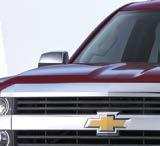












Women in Auto Care, a community of the Auto Care Association, set a new record for its scholarship program, distributing 86 awards in both cash scholarships and starter toolkits, totaling $413,500 in value. The awards benefited female students across the U.S. interested in a career in the auto care industry. The incredible success of this year’s program was supported by the generosity of Women in Auto Care community sponsors and member donations.
Horowitz testified in February that federal agencies failed to use some of the tools at their disposal to prevent fraud, including the Do Not Pay list. The U.S. Department of the Treasury had set up the list of suspicious payees whoshould trigger additional screening.
He said advance screening with the U.S. Department of the Treasury Do Not Pay list could have saved taxpayer money.
Over the last year, Women in Auto Care continued its partnership with Garage Gurus to award five $7,000 cash scholarships totaling $35,000, introduced its largest cash scholarship of $10,000 in partnership with Dorman, awarded 20 toolkits valued at $9,000 each through its continued partnership with NAPA and partnered with Acuity to award an additional 10 toolkits valued at $4,250 each. For more information about scholarship opportunities, visit autocare.org/women-in-auto-care.


Source: Auto Care Association










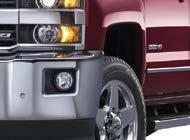




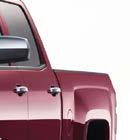






“The two new Strike Forces launched today will increase our reach as we continue to pursue fraudsters and recover taxpayer funds, no matter how long it takes.”
— LISA MONACO DEPUTY ATTORNEY GENERAL

Electric vehicle (EV) owners experience more problems with advanced technology than do owners of internal combustion engine (ICE) vehicles, according to the J.D. Power 2023 U.S. Tech Experience Index (TXI) Study, released Aug. 24. The study focuses on the user experience with advanced vehicle technology as it first comes to market and is an early measure of problems encountered by vehicle owners.
Seventeen of the 21 advanced features offered on both fuel versions have more quality problems per 100 vehicles (PP100) for EVs (excluding Tesla) than for ICE vehicles. In addition, satisfaction is lower for EVs across 86% of the advanced techs compared with those on ICE vehicles. Features such as remote parking assistance (27.4 PP100 among EVs vs. 10.7 PP100 among ICE vehicles) and interior gesture controls (49.6 PP100 among EVs vs. 31.2 PP100 among ICE vehicles) have some of the largest gaps between the two fuel versions.
Execution and Layout (APEAL) Study. The total vehicle problems in the IQS is 46% higher among EVs (excluding Tesla) than ICE vehicles and satisfaction is lower among owners of EVs across nine of 10 APEAL categories than among owners of ICE vehicles.
“Innovation through a strong advanced tech strategy is crucial for all vehicle manufacturers, especially those working to build their reputation in the electric vehicle space,” said Kathleen Rizk , senior director of user experience


benchmarking and technology at J.D. Power. “The perception in the industry is that most EVs should offer many advanced technologies to compete with high-tech entrants like Tesla. Success will be dependent on those manufacturers that can execute flawlessly, while ensuring the user experience is the same for those who are tech savvy and those who are not.”
Following are key findings of the 2023 study : Warning bells—disruptors are

coming: New manufacturers (e.g., Tesla, Rivian, Lucid and Polestar) are making a very strong debut in the U.S. market in terms of their advanced tech offerings. While some brands have small sample sizes and state registration restrictions prohibit ranking, most of the innovation of these newer brands far exceeds that of traditional manufacturers—except for Genesis—and significantly outpace the Innovation Index premium average (588 on a 1,000-point scale). Innovation and tech offerings are high for new manufacturers, but they are not providing a problem-free experience. Average problem levels for advanced technologies among new manufacturers, except for Polestar, are well above the premium average of 24.3 PP100 and are among the highest in the industry.


Owners don’t see eye-toeye with biometrics: In terms of accuracy, biometrics that monitor behavioral characteristics (e.g., eye movement) are less problematic than those that monitor physiological characteristics (e.g., facial recognition) but are more annoying. Regardless of the

biometric type, owners say they do not consider them to be useful (fingerprint reader rating of 7.24 (on a 10-point scale); facial recognition
7.48; and direct driver monitoring
7.75). Despite continued usage, biometric technologies have low desirability in terms of owners wanting them in their next vehicle compared with other advanced technologies.
Owners charged up about plug and charge: The plug-and-charge technology is well liked by owners even though new tech in EVs can often be problematic. After plugging into a public charger, the charger identifies the vehicle, validates the charge and starts the charging process. Payment and billing occur automatically upon completion of the charge. Nearly three-fourths (72%) of owners say they want the technology on their next vehicle. With just 6.0 PP100 and overall satisfaction of 8.89 (on a 10-point scale) across the industry, plug and charge is well executed across most manufacturers and vehicle owners say that it is a muchappreciated feature.
Waning ADAS usage: Among owners who say they use specific technologies all the time, usage of many safety and advanced driver assist systems (ADAS)
technologies have declined slightly year over year, most notably reverse automatic emergency braking (-4 percentage points); safe exit assist (-3); and automatic emergency steering (-3). While usage rates are still relatively high, small declines across several technologies is a worrying sign that reinforces the need for automakers to remain diligent on providing a positive customer experience so that trust and perceived feature usefulness are not negatively affected.
Highest-Ranking Brand s
Genesis ranks highest overall and highest among premium brands for innovation, with a score of 656. In the premium segment, Cadillac (533) and Lexus (533) each rank second in a tie.
Hyundai ranks highest among mass market brands for innovation with a score of 547. Kia (528) ranks second and GMC (505) ranks third.
The U.S. Tech Experience Index (TXI) Study analyzes 40 automotive technologies, which are divided into four categories: convenience; emerging automation; energy and sustainability; and infotainment and connectivity. Only the
30 technologies classified as advanced are award eligible.
Chevrolet Corvette is the premium model receiving the convenience award for ground view camera technology. Toyota Sequoia is the mass market model receiving the convenience award, also for ground view camera technology.
Genesis GV80 is the premium model receiving the emerging automation award for front cross traffic warning. Hyundai Palisade is the mass market model receiving the emerging automation award for reverse automatic emergency braking.

BMW iX receives the award for energy and sustainability in the premium segment for one pedal driving. MINI Cooper receives the award for energy and sustainability in the mass market segment, also for one pedal driving.
BMW 3 Series receives the award for infotainment and connectivity in the premium segment for augmented reality display. Chevrolet Tahoe (streaming-based entertainment) and Hyundai Sonata (phone-based digital key) each rank highest in a tie for infotainment and connectivity in the mass market segment.
ALABAMA
Audi Birmingham Irondale
205.986.7410
205.986.7438 Fax
M-F 7am-6pm; Sat 8am-4pm daniel.williford@audiofbirmingham.com www.audiofbirmingham.com
Audi North Miami North Miami Beach
305.952.5960
305.944.4009 Fax
M-Sat 8am-6pm amartinez@audinorthmiami.com www.audinorthmiami.com
Audi Orange Park Jacksonville
904.565.2230
904.565.2216 Fax
M-F 7am-7pm; Sat 8am-5pm cdrake@audiorangepark.com www.audiorangepark.com
The 2023 U.S. Tech Experience Index (TXI) Study is based on responses from 82,472 owners of new 2023 model-year vehicles who were surveyed after 90 days of ownership. The study was fielded from February through May 2023.
The U.S. Tech Experience Index (TXI) Study complements the annual J.D. Power U.S. Initial Quality Study (IQS) and the J.D. Power U.S. Automotive Performance, Execution and Layout (APEAL) Study by measuring how effectively each automotive brand brings new technologies to market. The U.S. Tech Experience Index (TXI) Study combines the level of adoption of new technologies for each brand with excellence in execution. The execution measurement examines how much owners like the technologies and how many problems they experience while using them.
Source: J.D. Power
www.autobodynews.com

Audi West Palm Beach West Palm Beach
866.441.3309
561.615.4175
561.615.4179 Fax
M-F 7:30am-6pm
parts@audiwpb.com
GEORGIA
Audi Gwinnett
Duluth
678.258.2535
770.476.9311 Fax
M-F 7:30am-6pm
parts@audigwinnett.com www.audigwinnett.com
TENNESSEE
Audi Knoxville
Knoxville
800.382.2787
865.691.3742
865.251.3227 Fax
M-F 7:30am-6pm; Sat 8am-2pm
brianmaillet@harperdealerships.com www.audiknoxville.com
Regardless of the age of your customer’s Audi, Audi dealers have access to over 200,000 part numbers and are supported by a nationwide network of distribution centers to help ensure non-stocked parts are delivered the next day.
The average price Americans paid for a new vehicle in August was virtually flat compared to one year ago, as higher inventory levels and increased incentives held yearover-year price gains in check.
The average transaction price of a new vehicle in August was $48,451, up only $42 from one year ago, according to Kelley Blue Book, a Cox Automotive company. Prices increased 0.6% ($286) from July’s revised ATP of $48,165. Transaction prices are now down 2.4%, or $1,212, from the start of the year, the largest decrease in the past decade.

“After a tumultuous last few years in the automotive marketplace, now we are seeing new-vehicle pricing trends hold steady,” said Rebecca Rydzewski , research manager at Cox Automotive. “Dealers and automakers are feeling price pressure, and with high auto loan rates and growing inventory levels, new-vehicle prices seem to have hit a ceiling, at least for now. The very real potential for a UAW strike may impact some product lines, but with the current inventory levels in place, we don’t expect a short-lived
any meaningful way, at least in the near term.”
Led mostly by aggressive price cuts from Tesla, luxury vehicle prices in August were down 3.3% year over year. Tesla ATPs have plummeted 19.5% compared to August 2022 as the brand pushes for higher volume. Tesla Model 3 prices are down more than 21% year over year. Luxury vehicle incentive levels also have significantly increased year over year, rising from an estimated 1.9% of ATP to 5.3% in August. Luxury vehicle sales in August were up 23% year over year, helping to push overall industry volume higher by more than 16%. During the same timeframe, non-luxury sales were higher by 15%.
The average price paid for a new non-luxury vehicle in August was $44,827, an increase of only 0.7% from one year ago. Compared to last month, non-luxury prices were down $169. The average incentive spend in the non-luxury segment
from 2.3% one year ago. Month over month, incentive spending was up 9.5%, increasing from 4.3% of ATP to 4.7%.
Only three vehicle segments had average transaction prices below $30,000 in August: compact cars, subcompact cars and subcompact SUVs. All three segments saw month-over-month price declines. August’s lowest priced vehicles in the U.S. market were the Mitsubishi Mirage and Kia Rio, and both are expected to be discontinued in the coming years as the market shifts to compact SUVs. The three bestselling segments in the market--midsize SUVs, compact SUVs and full-size pickup trucks---accounted for 45% of sales volume in August and had ATPs of $46,381, $35,688 and $65,567, respectively.
While luxury vehicle prices in August increased modestly over July, prices were down 3.3% year over year to $64,107. Since the start of 2023, luxury prices have declined by more than 4%. Overall, the luxury segment continued to
Stivers Decatur Subaru
Decatur
(404) 248-1888
Fax (404) 425-5800
Mon.-Fri. 7:30-6; Sat. 9-5 dway@stiversonline.com
www.stiverssubaru.com
Troncalli Subaru
Cumming
(770) 889-8951
Direct (678) 341-4220
Fax (678) 341-4221
www.troncallisubaru.com

deliver strong results in August, holding 18.8% share of the U.S. market.
Tesla price cuts have offset price gains by many luxury automakers. Audi, BMW and Mercedes-Benz all booked year-over-year price increases in August, with Audi and Mercedes-Benz ATPs up more than 10%. Cadillac, Land Rover, Lexus and Lincoln also posted price increases. Brands that posted year-over-year price declines included Buick, INFINITI, Jaguar and Volvo.
EV prices continue to fall, led again by market leader Tesla. In August, the average price paid for an electric vehicle was $53,376, down from $53,633 in July and down from more than $65,000 one year ago. Incentives for EVs in August were 8.1% of ATP, or $4,298. Tesla price declines are driving market prices lower. In August, Model 3 transaction prices were down 21% year over year, while Model S was down 17%, Model Y dropped 16%, and Model X was down 13%.
At the start of September, EV availability (as measured by
Flow Subaru
Winston-Salem
(800) 489-3534
(336) 725-3554 Fax
Mon.-Fri. 8-5; Sat. 8-1 subarupartsws@flowauto.com
www.flowsubaru.com
Jim Armstrong Subaru
Hickory
(888) 905-6135
(828) 322-9372 opt 5 Mon.-Fri. 8-5
parts@jimarmstrongsubaru.com
www.jimarmstrongsubaru.com

Parkway Subaru Wilmington
(800) 424-9434
(910) 793-8710 Fax
Mon.-Fri. 7-6; Sat. 8-2
days’ supply) was well above the industry average as product availability and EV production rapidly increases. According to the Q3 2023 Cox Automotive Dealers Sentiment Index, franchised automobile dealers have declining expectations for EV sales in the coming months.
Cox Automotive Chief Economist Jonathan Smoke noted, “Dealers are realizing this is not going to be an easy road in the short term, especially for some brands. However, the pressure dealers feel is from over-supply rather than a lack of demand. I see this as a natural speed bump and an expected part of growth. The No. 1 issue for consumers is price, and that’s a barrier even to considering an electric vehicle. As an economist, I can confidently predict that surplus inventory and increased competition will eventually drive down prices, which will help with EV consideration and adoption.”
Incentives averaged $2,365 in August to reach the highest point in a year, increasing to 4.9% of ATP compared to 4.5% in July. While August incentives increased by $221 month over month, they remain historically low. For comparison, Kelley Blue Book estimates incentives averaged 10.8% of ATP in August 2020 and 10.5% in August 2019.
The high-end luxury car segment had the highest incentives in August 2023 at 10.1% of ATP, followed by electric vehicles at 8.1%, luxury cars at 8.0%, entry-level luxury cars at 7.3% and full-size pickup trucks at 6.1%. Vans, high-performance cars, and small and midsize pickup trucks had some of the lowest incentives in August.
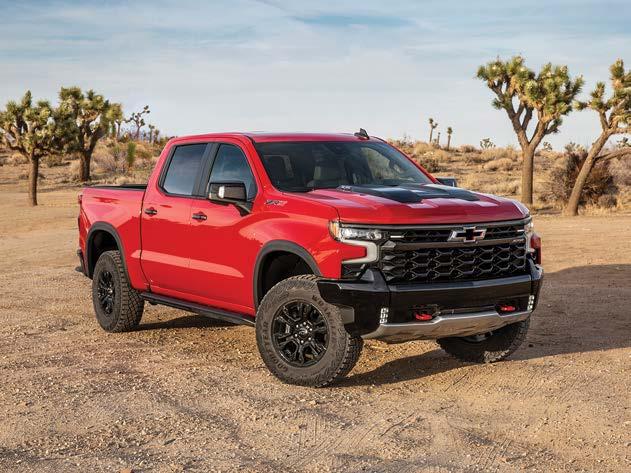

Source: Kelley Blue Book
Ford is working with the National Highway Traffic Safety Administration (NHTSA) while it investigates Mustang Mach-E recalls affecting 2021 and 2022 model years.
The automaker recalled the Mustang Mach-E allelectric SUV in June 2022. According to the official NHTSA documents, the Ford Mustang Mach-E’s June 2022 recall concerned “an overheated high-voltage battery contractor [that] may cause the vehicle to lose drive power, increasing the risk of a crash.”
The recall affected 48,924 Mach-E units. Ford initiated the recall and notified Mustang Mach-E owners affected by the recall. The
experienced OEM decided to remedy the issue through a software update, free of charge.
Recently, the NHTSA opened an investigation into Ford’s remedy for the Mustang Mach-E’s overheated highvoltage battery contractor issue. It opened a recall query, investigating 64,000 Mach-E EVs that received “recall fixes,” presumably the software updates that would remedy the battery issue.
Some Mustang Mach-E owners submitted complaints to the NHTSA regarding Ford’s proposed remedy to the battery-related recall in 2022. One Mach-E owner told Reuters the EV’s high voltage battery junction box failed after receiving the software update Ford believed would fix the battery issue.
Public charging is a common concern for new EV buyers and current owners alike, and local charging infrastructure can depend heavily on where a person lives. In a recent study, one organization looked at each U.S. state to assess the maturity of their local charging infrastructure, demonstrating some of the places where it may be easiest—and hardest—to own an EV.
In a joint study from research firm SBD Automotive and locationdata company Here Technologies, researchers analyzed the number of public charging across all 50 U.S. states and the District of Columbia to determine which had the best and worst charging infrastructures, via Green Car Reports.
The research used data from Here’s EV Charge Points API and the U.S. Department of Energy’s Alternative Fuels Data Center (AFDC.)

The study looked at multiple categories of charger density from 2020-2022, including charging points per road length, average charging power, the state’s EV market share (2022 only), and the number of EV fleets per charging point. Using the category breakdowns, the two parties then assigned scores to states based on these factors.
Washington D.C. ranked first on the index, ahead of state leaders Connecticut, Vermont, Massachusetts, Maryland and Maine. Making up the rest of the top 10 states were New York, Colorado, Rhode Island and California.
The index also includes a simple infographic demonstrating the number of EVs per charging point in 2022. The graphic shows New Jersey as the charging density leader, with states including Florida, Texas, California and many others trailing just behind. Following the study, researchers suggest a rate of one public
charger for every eight or nine EVs.
Most EV owners charge their vehicles at home, work or other consistent locations rather than at charging stations. However, anyone planning to use their EV on a road trip or a long commute may need regular access to public charging. With EV adoption rates rapidly increasing, public charging will need to follow to accommodate the increasing number of vehicles on the road—and to prevent current chargers from getting too full.
The study comes after several announcements of automakers switching from Combined Charging System (CCS) charging hardware to Tesla’s North American Charging Standard (NACS) plugs in the U.S. The shift will see vehicle manufacturers such as Ford, GM, Rivian, Honda and more building future cars with the NACS plug, some as soon as next year, which will also give them access to the Tesla Supercharger network.

PPG announced the introduction of PPG LINQ™ Color software and the PPG MAGICBOX™ body shop assistant for smarter wireless mixing in automotive repair shops. The advanced tools are the latest components of the PPG LINQ end-to-end digital solution for the global refinish industry that provide productivity and sustainability improvement for body shops.
With PPG LINQ, refinish customers can streamline their repair process by using PPG’s cloud-based platform and its interconnected digital hardware, software and related services. The PPG MagicBox body shop assistant is a small but powerful device that communicates environmental conditions in mixing rooms and receives formulas direct from the PPG LINQ Color software. These new tools also extend the digital ecosystem to smaller body shops not previously served by the PPG LINQ solution.
Learn more at ppglinq.com.
Source: PPG
FLORIDA
Orlando Volkswagen South Orlando
407-581-0630
M-F 7:30am-6pm; Sat 7:30am-5pm rharris01@vtaig.com
Orlando Volkswagen North Orlando
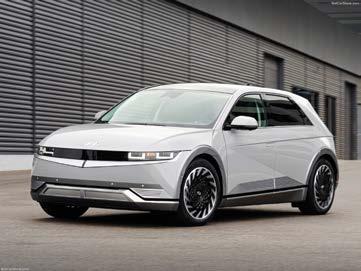
321-214-3169
Fax: 407-644-9408
M-F 7:30am-6pm; Sat 7:30am-5pm spearce@vtaig.com
GEORGIA
Jim Ellis Volkswagen Atlanta

800-653-5547
770-454-7711
Fax: 770-986-0001
M-Sat 7:30am-7pm vwwholesaleparts@jimellis.com
VIRGINIA
Checkered Flag Volkswagen
Virginia Beach
757-687-3465
Fax: 757-687-3514
M-F 8am-5pm volkswagenparts@checkeredflag.com
Sometimes, “slow and steady” just isn’t an option
Small business owners are feeling the pain of inflation-driven interest rate hikes, another difficulty for those owners to overcome as they continue to recover from the COVID-19 pandemic-era shutdowns.
A rash of federal spending and an increase in the money supply in recent years have fueled inflationary pressures. Prices soared during the beginning of the Biden administration, making it hard for Americans to make ends meet.
To push down inflation, the U.S. Federal Reserve hiked interest rates nearly a dozen times to the highest level in 22 years. As The Center Square previously reported, the U.S. Bureau of Labor Statistics’ Producer Price Index, a key marker of inflation, has increased nearly 17% since President Joe Biden took office. Wages, meanwhile, have not kept up.
Now, inflation has largely slowed its rapid increase, but the new interest rates have made
borrowing money much more expensive.
“Congress spent trillions upon trillions in recent years both in its irresponsible response to the pandemic and simply for further bloated increases for federal programs and agencies,” Joel Griffith, an economic expert at the Heritage Foundation, told The Center Square. “The central bank— the Federal Reserve—printed nearly $5 trillion, in part to finance this deficit spending. These newly created dollars flowed into the economy at a rapid pace. More dollars chasing too few goods sparked inflation.”
The average mortgage prices recently hit 7.09%, the highest in two decades. The same time last year, the average rate was about 5.13%. Interest rates on business loans have risen as well.
“In addition, when banks lend out these dollars, the money supply increases even further,” Griffith said. “By raising interest rates, the Fed hopes to curtail demand for these loans— lessening the inflation they the Fed itself helped create.”





954-466-2176
954-390-6449 Fax
Hours: M-F 7-6; Sat 7-2:30 jmcnamara@griecocars.com Gus Machado Ford HIALEAH 305-822-8338
305-825-3018 Fax
Hours: M-F 8-7; Sat 7-4 avalle@gusmachadoford.com
863-680-2194 Fax
Hours: M-F 7-6; Sat 8-4 parts@Lakelandautomall.com www.LakelandFord.com
Recently released survey data gives a window into the impact of those policies, reporting many small business owners cite interest rates as a major problem.
“Over half (58%) of small business owners who borrowed or tried to borrow reported high interest rates as their largest complaint in accessing financing,” the National Federation of Independent Business said.
NFIB’s monthly survey of business owners shows the percentage who cite interest rates as their biggest concern has ticked up as well.
Those businesses are also generally concerned about the banking sector, which has seen multiple bank collapses and fear of a domino effect.
“The health of the financial system is essential to small business operations,” said Holly Wade, executive director of NFIB’s Research Center. “While most
Stellantis announced its partnership with Charge Enterprises, Inc., in which Charge has become an EV charging installation partner for Stellantis’ 2,600+ U.S. dealer network. Charge becomes the fourth recommended partner for dealer EV readiness for Stellantis dealers across the U.S., joining Future Energy, Vehya and AGI.
In another key step to ready its 2,600-plus dealerships for the automotive industry’s electrification plans, Stellantis is partnering with Charge Enterprises to support implementation of its required timeline. Charge differentiates itself with more than 150 years of automotive OEM leadership expertise to enhance the dealers’ experience and support the requirements to provide infrastructure implementation.
As an experienced infrastructure partner, Charge’s client education, project management, design, engineering and installation will provide a full-service solution for
770-306-6715 Fax
Hours: M-F 7-5; Sat 7-5
Hours: M-F 7-6; Sat 7-4 www.autonationfordmemphis.com
Co-President & Publisher
Nathan Gregory
Co-President & Publisher
Paul Stepanek
Editor
Abby Andrews
Contributing Writers
Mike Anderson,Stacey Phillips, John Yoswick, Cole Strandberg
Advertising Sales
Joe Momber, Norman Morano
Office Manager
Kelly Cashman
Digital Marketing Manager

Bryan Malinski
Art Director
Rodolfo Garcia
Senior Designer
Vicki Sitarz
Accounting & HR Manager
Heather Priddy
Permissions Editor
Randi Scholtes
Serving Illinois, Iowa, Indiana, Kansas, Kentucky, Michigan, Minnesota, Missouri, Nebraska, North Dakota, Ohio, South Dakota, Wisconsin and adjacent metro areas. Autobody News is a monthly publication for the autobody industry. Permission to reproduce in any form the material published in Autobody News must be obtained in writing from the publisher.
©2023 Autobody News, LLC.

Autobody News
P.O. Box 1516 Carlsbad, CA 92018 (800) 699-8251 (760) 603-3229 Fax www.autobodynews.com editor@autobodynews.com
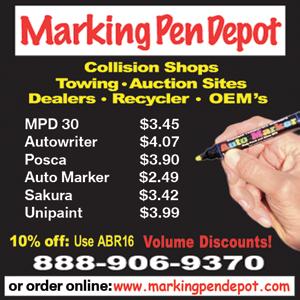


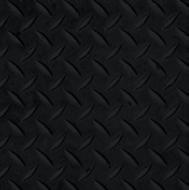

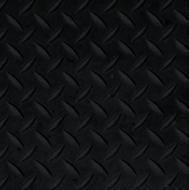

We’re excited to announce Californiabased entrepreneurs Nathan Gregory and Paul Stepanek have acquired Autobody News, based in Carlsbad, CA, effective August 2023.
Gregory and Stepanek bring a potent mix of content production, advertising, business management and growth experience necessary to lead Autobody News. With a combined professional history spanning over two decades across diverse sectors such as entertainment media, infrastructure construction, real estate investment, online media and consumer products, they bring a wealth of knowledge and entrepreneurial spirit to the business.
With our experience in entertainment media, we set out to acquire a media business that served a durable, stable and essential market. Upon our introduction to Autobody News, it became evident this platform
matched our strategic objectives. Recognizing its robust brand identity and foundational strength, we are excited to integrate our experience in content production, digital media and advertiser relationship management.
Our aim is to enhance the brand’s prevailing reputation while increasing and improving content and advertising opportunities that resonate with the industry’s evolving needs. The collision repair industry represents a critical segment of the market, and we are committed to providing more and better national, regional and local news and content, bolstering the unique position Autobody News holds in the market.
“Autobody News is more than just a publication; it’s a legacy,” said Stepanek. “With this acquisition, our vision is to tap into the core strength of Autobody News by further enhancing its content, especially the unique regional offerings. We understand the trust and expectations associated with this, and we’re committed to delivering.”
“Having a clear digital roadmap is crucial in today’s media landscape,” added Gregory. “We’re thrilled about
infusing our digital media expertise into Autobody News, ushering in an era of improved digital content and advertising opportunities that resonate with the industry’s evolving needs.”
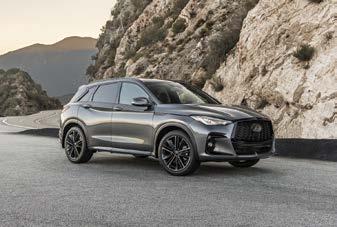

We value the support and loyalty of

continue to provide the top-notch content and excellent client service Autobody News is known for.


We are proud of the multiyear relationships the company has developed with its talented columnists and will continue to rely on their expert coverage of the industry.
coverage.
For advertisers, we plan to leverage cutting-edge digital advertising technology for improved opportunities based on our expertise in this area.
We will uphold and elevate the standards set by Autobody News since its inception.
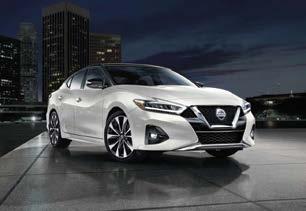
Autobody News was founded in 1982 by a body shop owner in Southern California. After recognizing its great brand equity and growth potential, Barbara Davies and Jeremy Hayhurst purchased the publication 16 years ago.

When they took over in 2007, there were only two regional editions circulated in seven states. Over the next four years, they expanded to all 50 states and printed five regional editions, enabling the company to reach body shops nationwide. Since then, the company has stayed true to its core mission of providing shops with regional and national news.
a dependable news source.
“Barbara and I didn’t know anything about the collision repair market when we purchased Autobody News but found everyone to be welcoming and helpful as we got up to speed,” recalled Hayhurst. “It’s a very tight-knit community and we’re grateful for the many personal and professional relationships we have developed.”
“Over the years, the passion and integrity of the Autobody News team have been the backbone of our success,” said Davies. “In Nathan and Paul, I saw not just entrepreneurs but custodians for the magazine’s future. Their vision, coupled with their digital prowess, made them the ideal choice to helm Autobody News’s next chapter.”
Autobody News is committed to providing essential news and information required by shops to stay competitive.

readers and advertisers and want to assure our stakeholders that operations will continue as normal. As a top industry publication, we will
For readers, we understand the importance of providing regional news for shops across the country and will continue to expand our
In addition to the five print issues, Autobody News provides digital news offerings, such as email newsletters, a podcast, social media platforms and robust website content. It has also developed a reputation for being
As the only independently owned collision repair magazine focused on regional news, our goal is to continue reporting on important industry developments.
Planned expansion includes improving content strategy, and focusing on the website, email, podcast and social media.
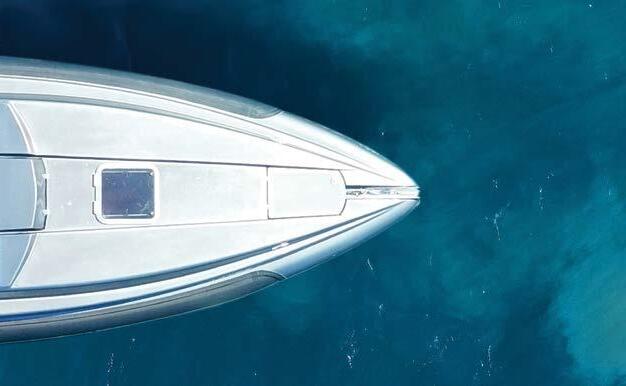
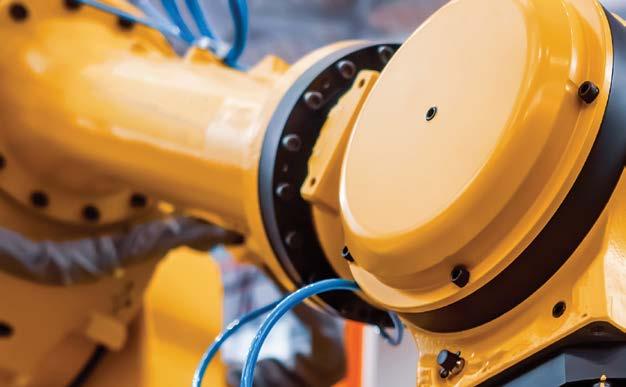

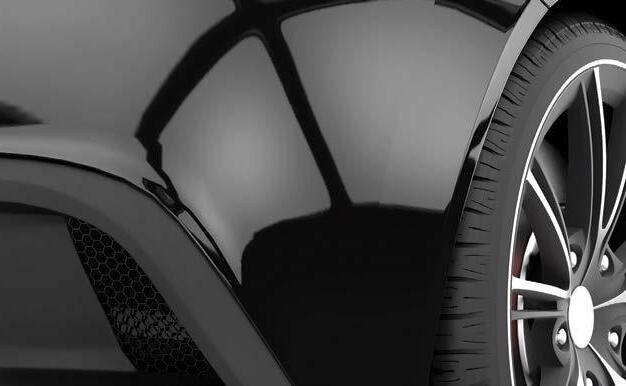
The Pro Form brand is a promise of reliability; our obsession is quality and our goal is product performance. We continuously invest in the improvement of our products and services because we care about the success of our customers’ businesses. When our customers have positive results and experiences, it is a win for Pro Form.
Let’s share our successes. Partner with our Pro Form team today.